How to See Kansai, Japan in 3 Days
Osaka, Kyoto, Kobe Travel Itinerary & Guide
3 Days in Osaka, Kyoto, Nara, & Kobe
Kansai features some of the most traditional aspects of Japan with castles, temples, and shrines, but it is also one of the most lively regions in all of Japan. The people of Kansai are known for their outgoing friendly nature and general warmth. Kansai consists of the major cities of Osaka, Nara, Kyoto, Kobe and more.
Day 1:
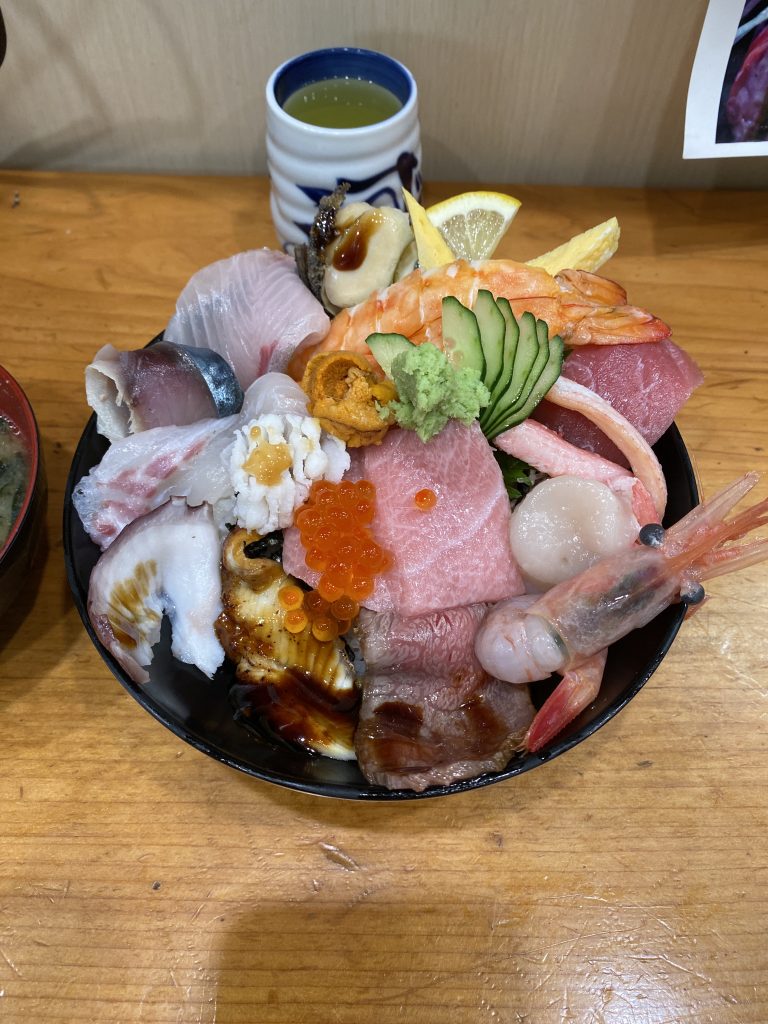
Sushi for breakfast, why not? You are in the home of sushi after all and with Osaka being a major port on the water, you can’t get sushi much fresher than this! Especially, at Endo sushi which is located at a famous fish and restaurant market. Endo sushi might feel a little intimidating on arrival, but the staff members are extremely kind and welcoming. Take a seat, order, and grab a cup of the self-serve green tea, while your sushi chef prepares one of the best meals you will have. I ordered the chirashi sushi special, which came with an array of raw fish and other seafood served over a bed of sushi rice. The fish was so fresh and filled with flavor. Please note this place is cash only.
Hours: 6:00am-2:00pm. Closed on Sundays and Holidays
1-1-86 Noda Fukushima-ku Osaka City
Take a quick stroll around the wholesale market to see some very unique seafood and other delicacies that might be a bit different from what you have in your home country.
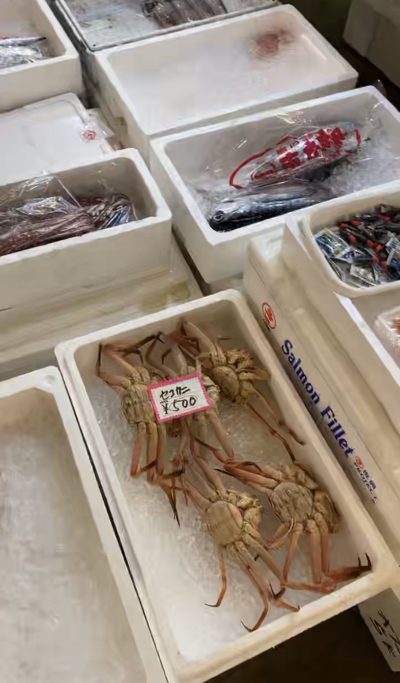
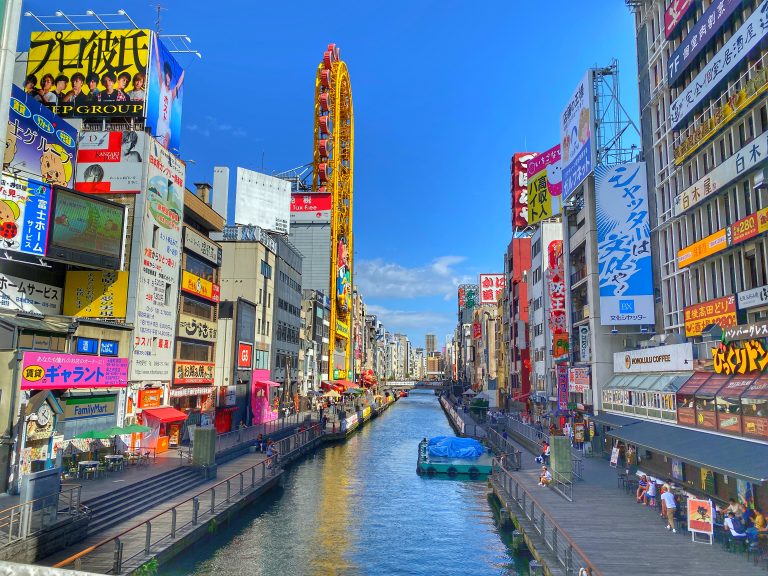
Dotonbori is the Shibuya or the Time Square of Osaka, but in the Osaka fashion, it’s, of course, a food hub! Dotonbori is restaurant after restaurant with cuisines that Osaka is famous for including Okonomiyaki (Japanese savory pancake), Yakisoba (stir-fried noodles with ginger), and takoyaki (fried octopus balls), crab, and more! Dotonbori is extremely lively, with tons of jumbotron screens, robotic crabs flailing above storefronts, and staff members yelling to welcome you into their restaurants. Remember, Osaka is known for being loud and lively!
Take the Sennichimae Line from Tamagawa Station to Namba Station to get to Dotonbori.
From one of the main bridges you will have the perfect angle to take a photo with the famous Glico Man, mimic his pose for the authenticate experience! This is one of the most famous photo ops in Osaka.
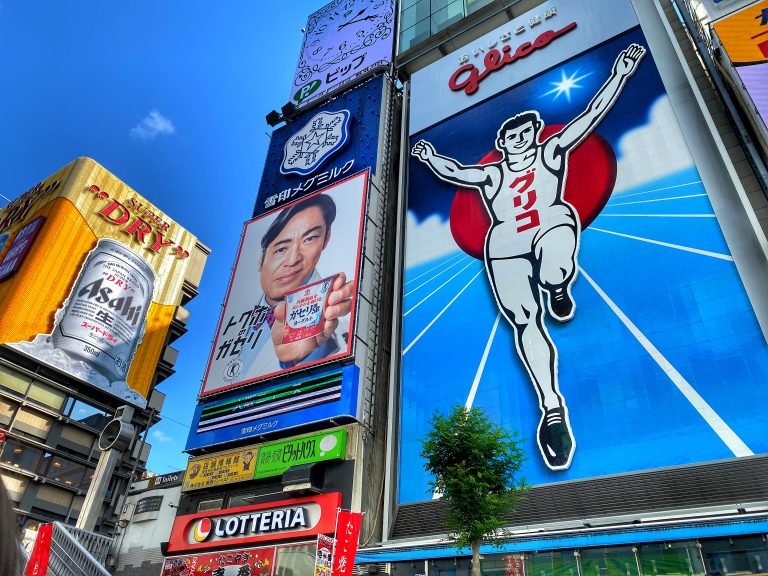
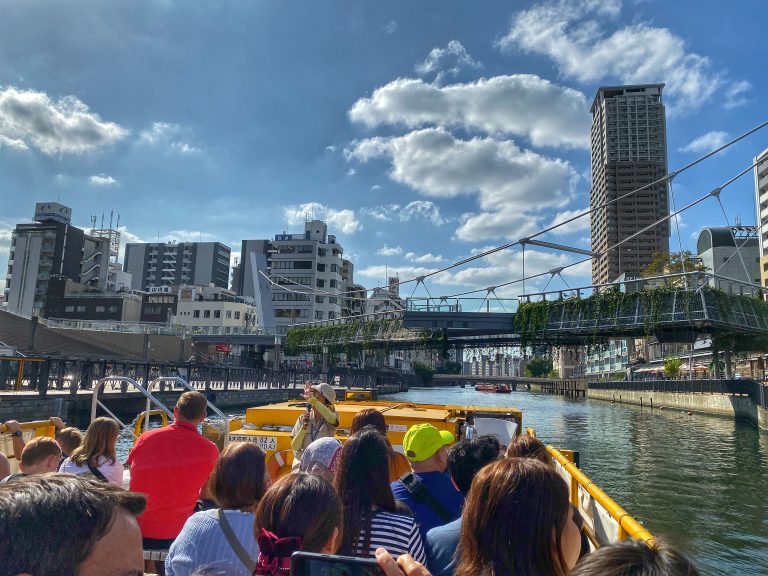
Get to know Dotonbori a little bit more by taking a boat tour down the river along Dotonbori. The tour is offered in English and Japanese, with the bilingual guide switching back and forth between the langagues. It’s a rather quick tour, taking you under the famous bridges of Osaka. The content focuses on the history of Osaka, the history of Dotonbori, the bridges, and surrounding architecture. It’s very touristy, but also rather interesting. You can buy tickets and board the boat outside of Donkihote.
Don Quijote is one of the most interesting stores in the world. It literally has everything and even more. I think what gets me most about Don Quijote is the random floor plan. (In the old Shibuya store, the first thing you would have to walk through to get into the main areas was mens underwear including a plethora of man thongs. Also, porn could be found right next to regular movies.) Don Quijote is the perfect place though to buy souvenirs, including dozens of different types of KitKats, which are famous to Japan. The various flavors of KitKats include green tea, sake, red bean paste, strawberry cheesecake, plum wine, and more. Don’t forget to pickup your man thong as well.
Photo courtesy of www.donki.com
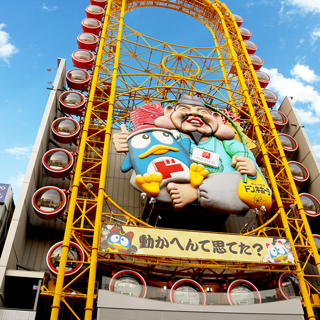
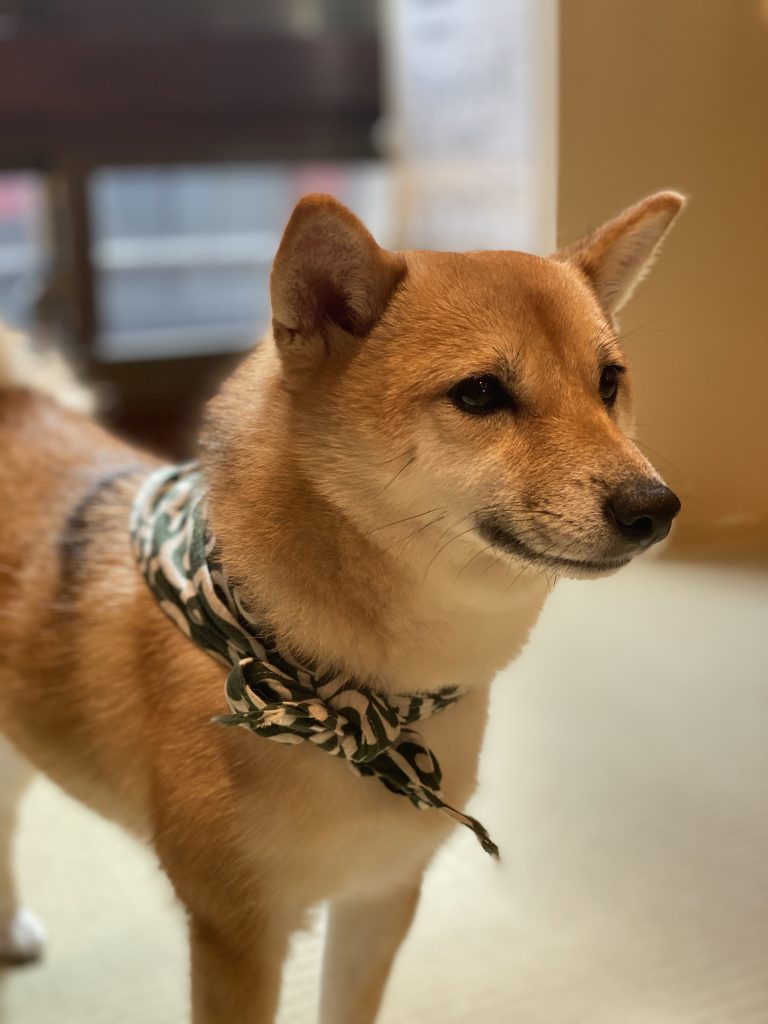
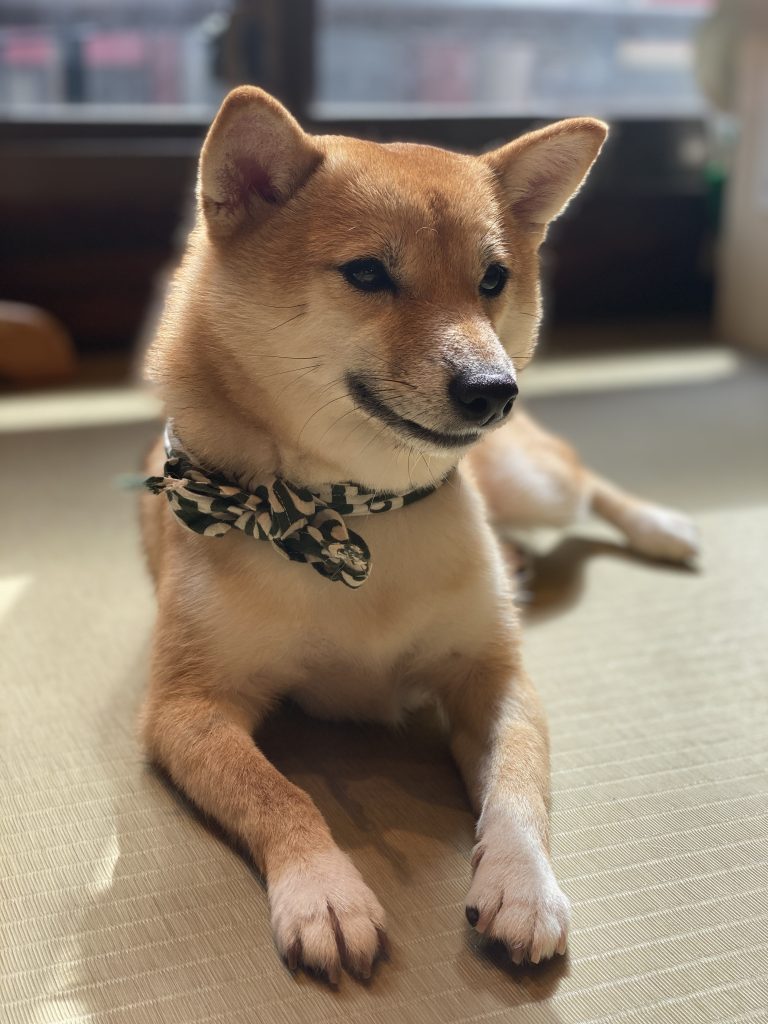
I’m going to start out with my disclaimer, I didn’t really enjoy the Mame Shiba Café. I love dogs will all my heart, and maybe it’s just the shiba inu bread but the dogs at Mame Shiba Café have no interest in playing with strangers. All of us sat around a room with toys and just kind of watched the dogs run off to the other side of the room. The staff members try their best to try and have the dogs interact with you, by starting to play with them with a toy, then passing the toy to you, but the dogs are more interested in playing with each other or the staff members they know and trust. If you do visit, don’t expect that the dogs will be like a giant lab that just want love and attention from everyone. What I did like about the place is that from what I could tell the dogs are treated extremely well. The staff is very protective about how you interact with them to make sure they feel safe and comfortable. They’re not forced to do anything outside of their comfort zone and get to play freely.
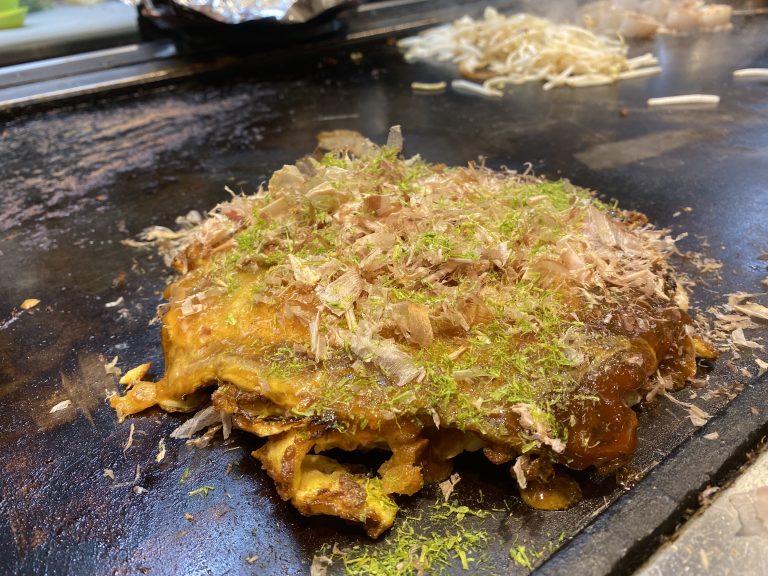
Ajinoya is a short walk from Donkihote and serves up some of Osaka’s most famous dishes including their famous Okonomiyaki and Yakisoba. Since this place is so famous, you can usually expect a wait of around 20-30 minutes, it’s worth it though! I ordered their okonomiyaki and a beer. If you get a chance to sit at the bar, you can watch the complex and messy okonimiyaki made right before your eyes. This is hands down the best Okonomiyaki I’ve had before (and I’ve eaten more than I am proud to admit).
Nara is famous for their “friendly” deer who love senbei (Japanese rice crackers). Purchase a few deer snacks from a local stand and have fun feeding the deer. Keep in mind they get a bit feisty if they don’t get their senbei.
To get to Nara Deer Park take the Kinetsu-Nara Line (Rapid-Express Kinetsu Nara) for 40-minutes to Kinetsu-Nara Station.
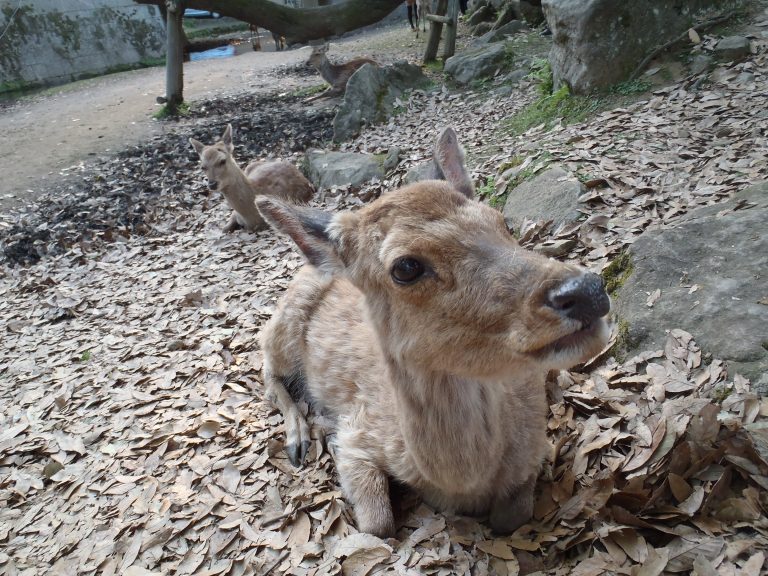
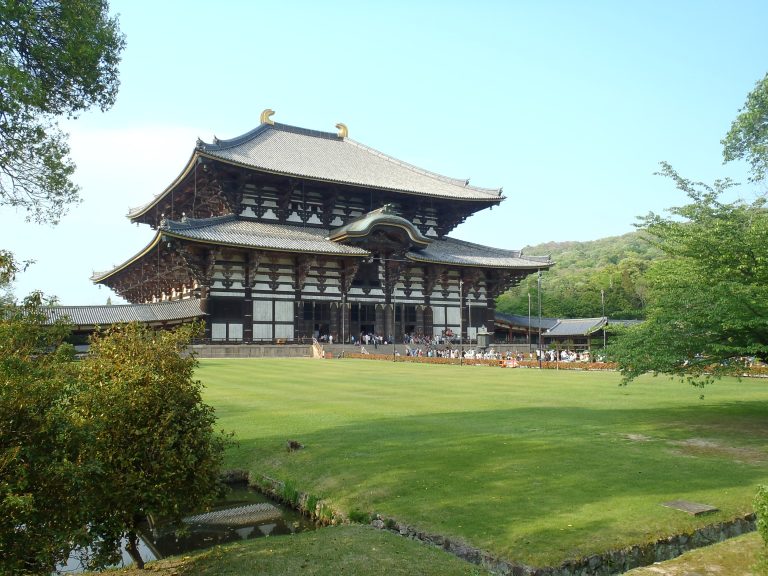
Todai-Ji is a stunning Buddhist temple complex almost over 1,300 years. With this temple dating back so far it is very unique and nothing like you’ve seen before!
Todai-Ji is a short 4-minute walk from Nara Deer Park.
With Osaka being known for its unique and delicious cuisine, it’s the perfect place in Japan to take a cooking class! This cooking class is extremely intimate and very special. Located in a Japanese home, you will get a very unique experience. The chef was the sweetest and most bubbly Japanese woman who had a fun sound for every step! We made yakitori (chicken skewers), kitsune udon (tofu with udon soup), and okonomiyaki on a stick. A welcome drink is included, but you can bring your own drinks as well. At the end of the very fun and interesting class, the chef provides a printout of the recipes.
Bonus: You get to use Japanese knives and experience how smooth a cut the blades provide.
You can reserve your cooking class here.
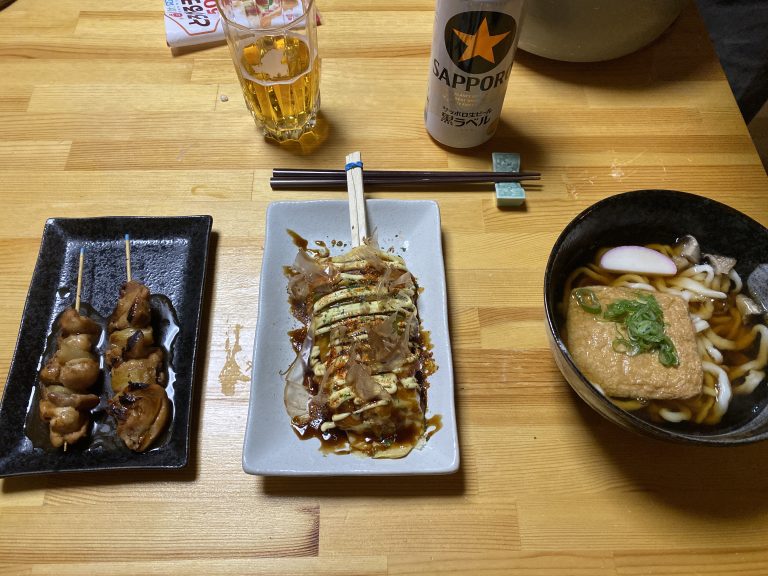
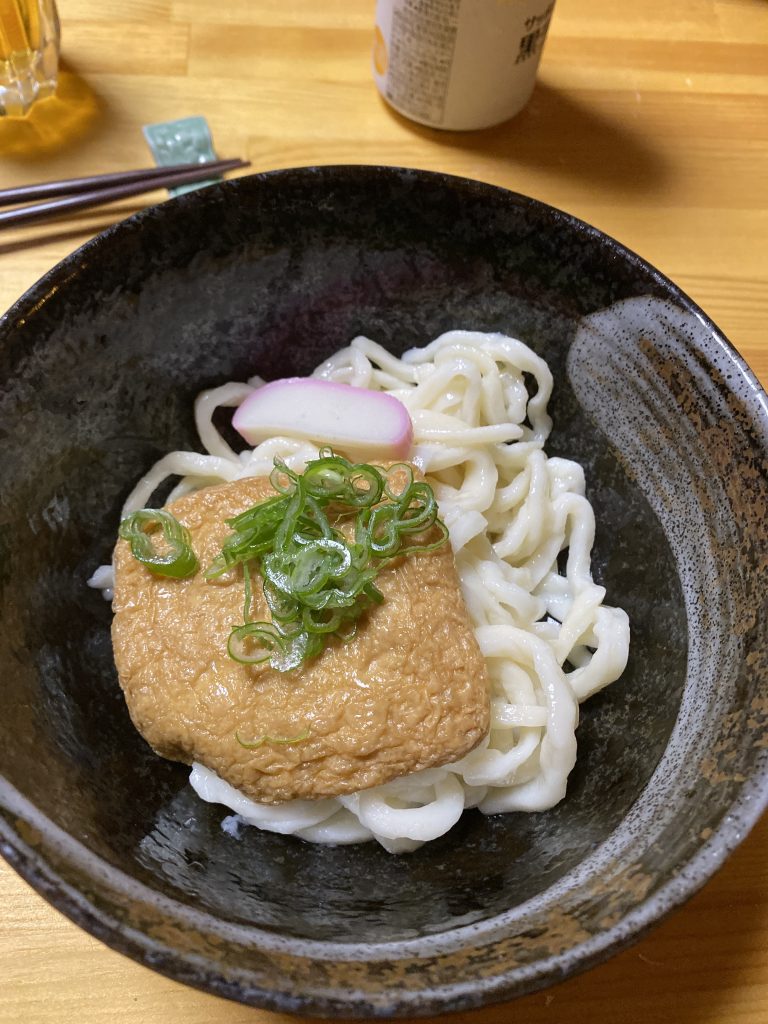
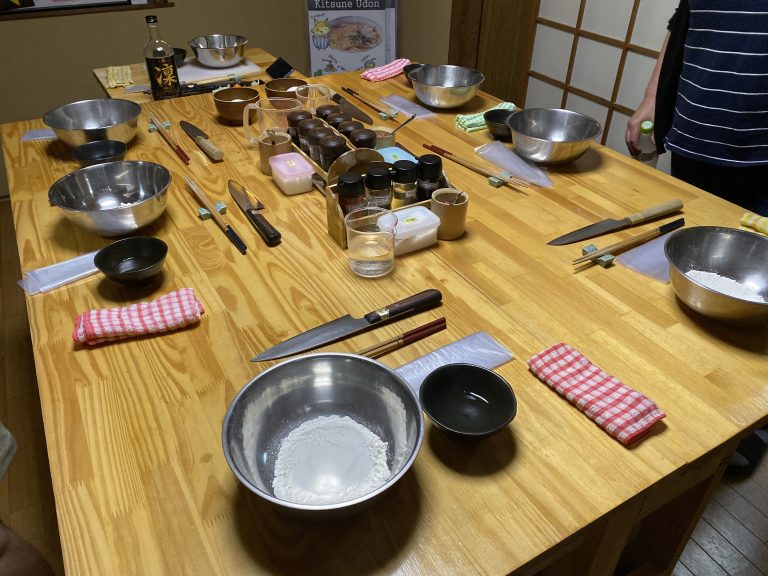
Day 2:
Day Two’s focus is food and castles, you’ll feel like royalty by the end of the day!
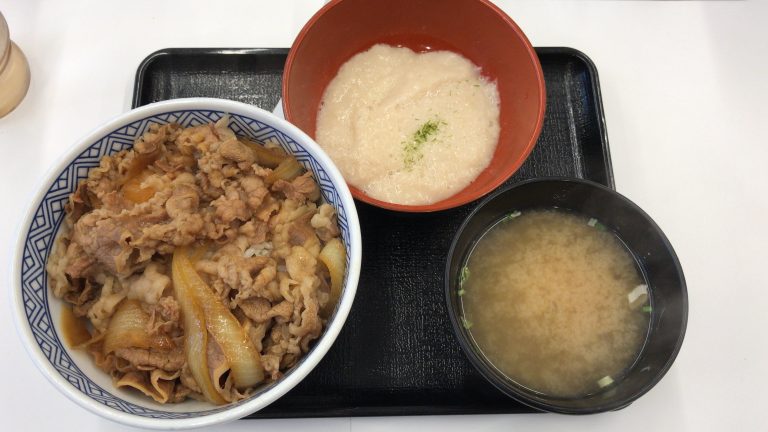
Gyudon (meat over rice) is a staple Japanese food and can be found all across Japan at places like Yoshinoya or Sukiya. Grab a quick and very cheap breakfast to start out the day.
Himeji Castle is the largest castle in Japan and one of the first UNESCO World Heritage sites in Japan. Located just over an hour from Osaka, Himeji Castle is an absolutely stunning half-day trip! Once you arrive at Himeji Station, you will see the castle in the distance, getting more and more impressive with every step closer. The castle grounds are quite nice as well. Inside the actual castle is very unique, but just to note there isn’t much inside as it’s stored in museums or has been taken out for preservation. You will find a nice shrine at the top floor of the castle.
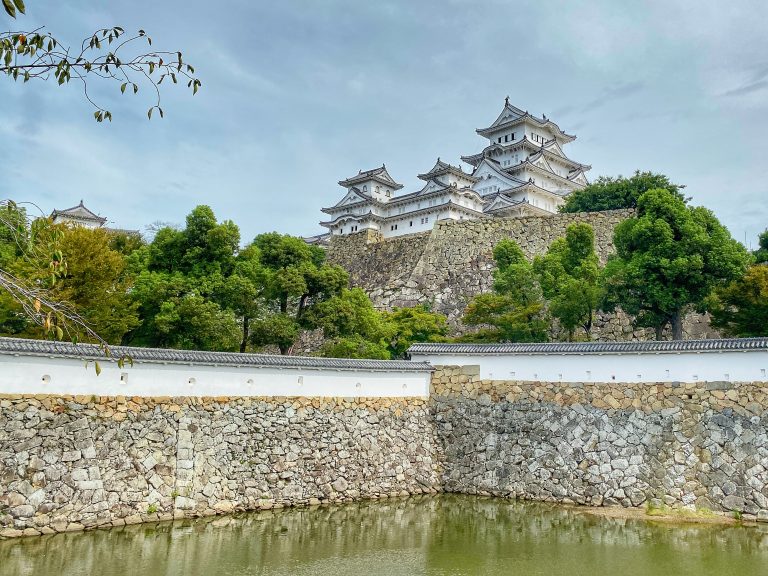
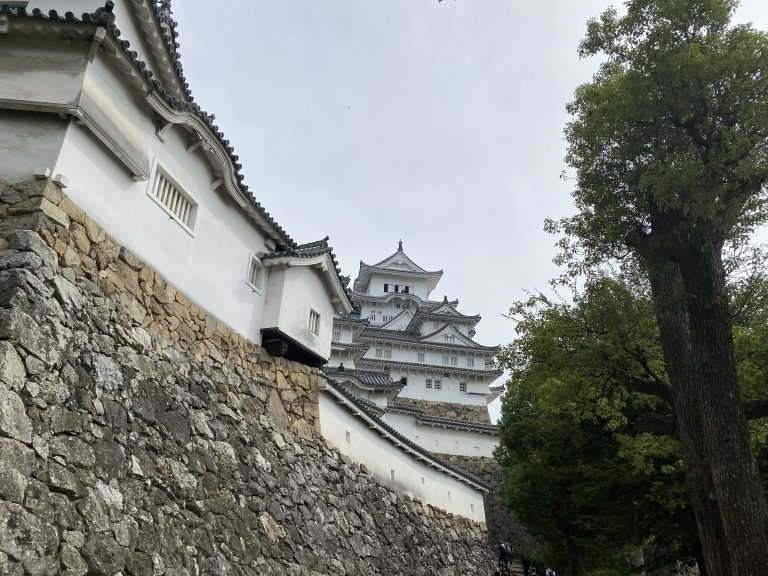
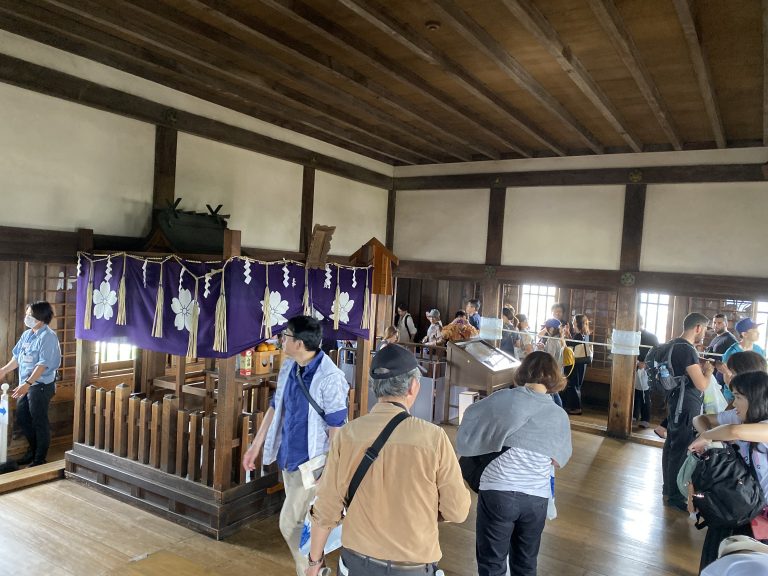
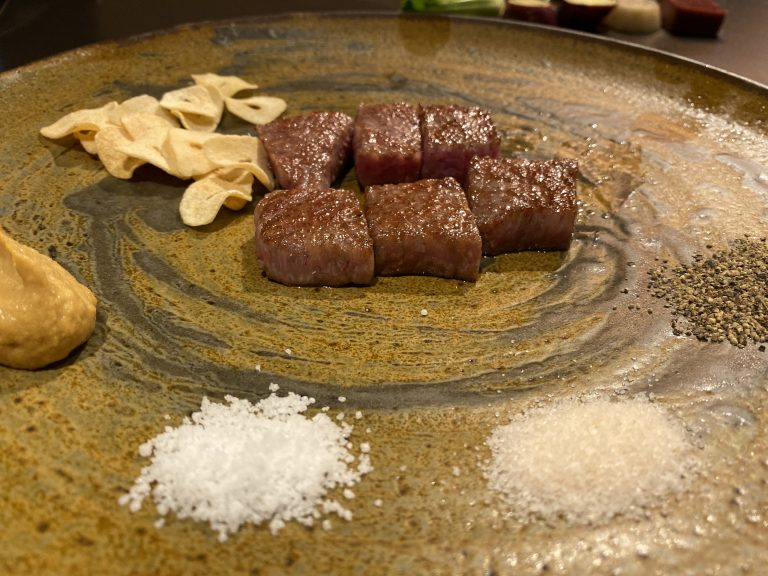
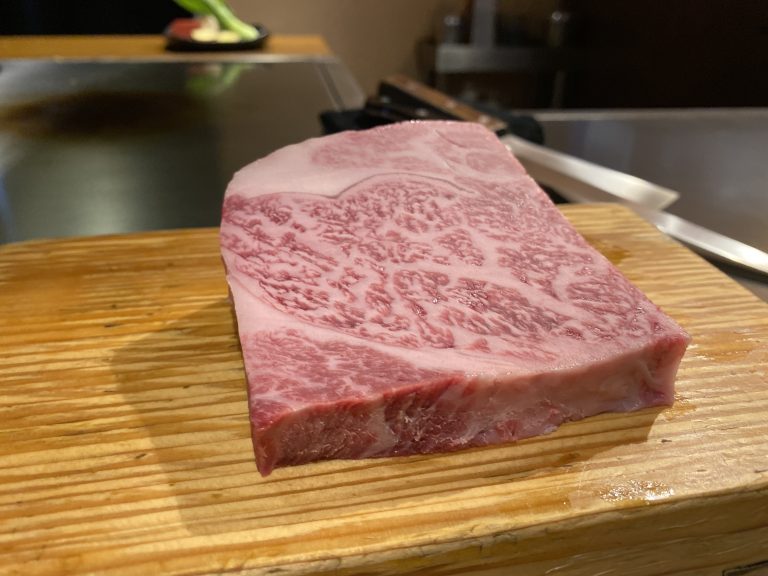
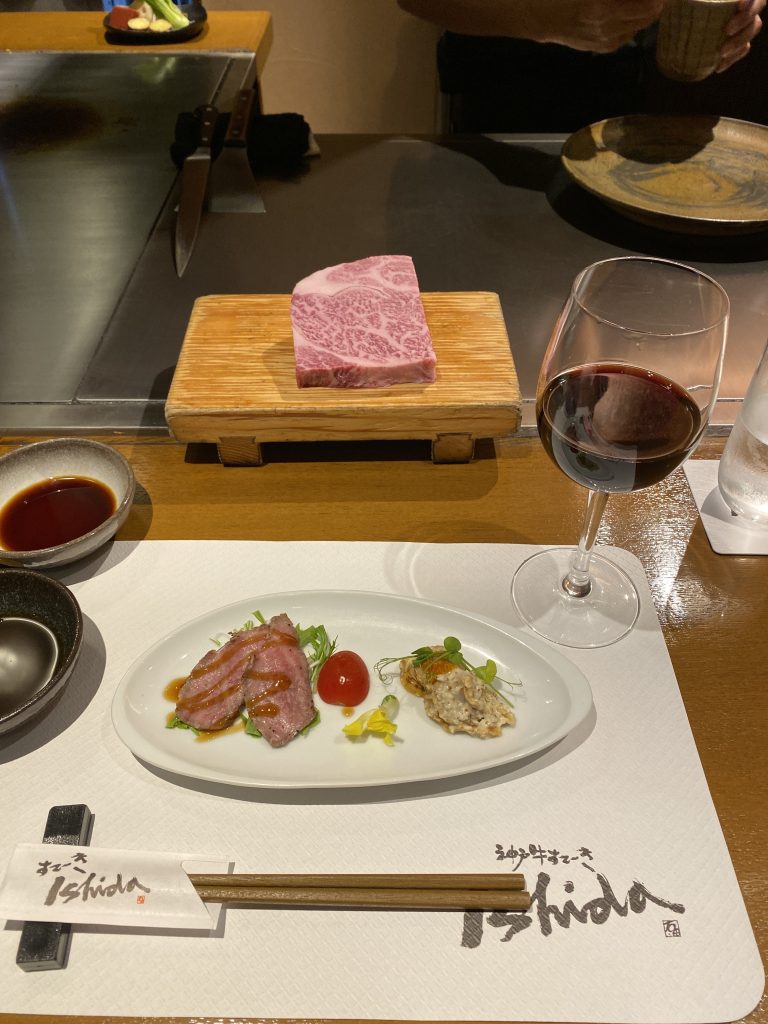
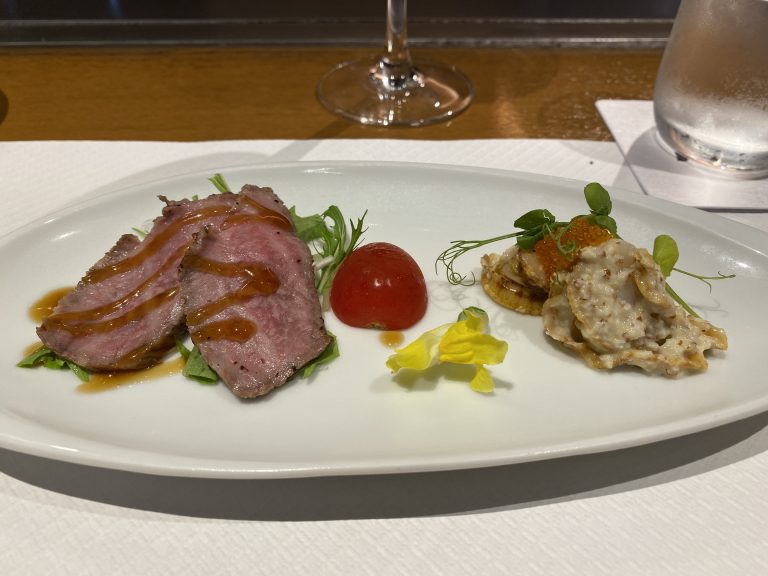
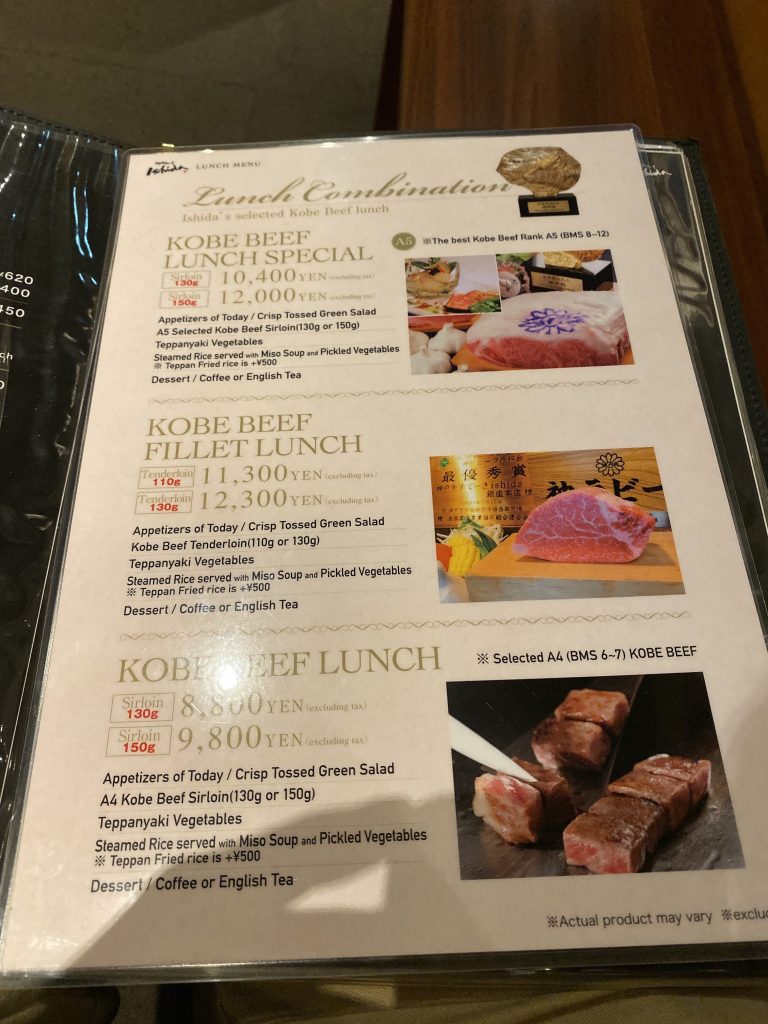
On the way back to Osaka, you’ll be passing by Kobe, so why not make a quick pit stop and try the world-famous Kobe Beef! After doing a little research and trying to determine what was open since I arrived a bit after lunchtime, I landed on Kobe Beef Steak ISHIDA Main-Shop. I am so glad I found this place. The staff was so kind and welcoming and I just had a smile on my face the entire time. Now, to the steak! I ordered the Specially selected Kobe Beef Lunch (150 gram). They prepare the Kobe beef in a variety of ways with sides, salts, and sauces. The chef cooks the Kobe beef right in front of you cutting each bite of the steak and cooking it to perfection. This does come at a cost of around $80, but it was the highest-grade Kobe beef on the market (A5). I strongly recommend going during lunch to take advantage of the very lucrative lunch deals.
To get here take the Tokaido-Sanyo Line Special Rapid: Nagahama from Himeji Station to Sannomiya Station.
Hours: 11:30am-3:00pm, 5:00pm-10:00pm. Closed on Tuesdays
To reach Osaka Castle from Kobe: take the Tokaido-Sanyo Line (Special Rapid Nagahama) from Sannomiya Station to Osaka Station then take the Osaka Loop Line to Osakajokoen Station and then it’s a 15-minute walk to Osaka Castle.
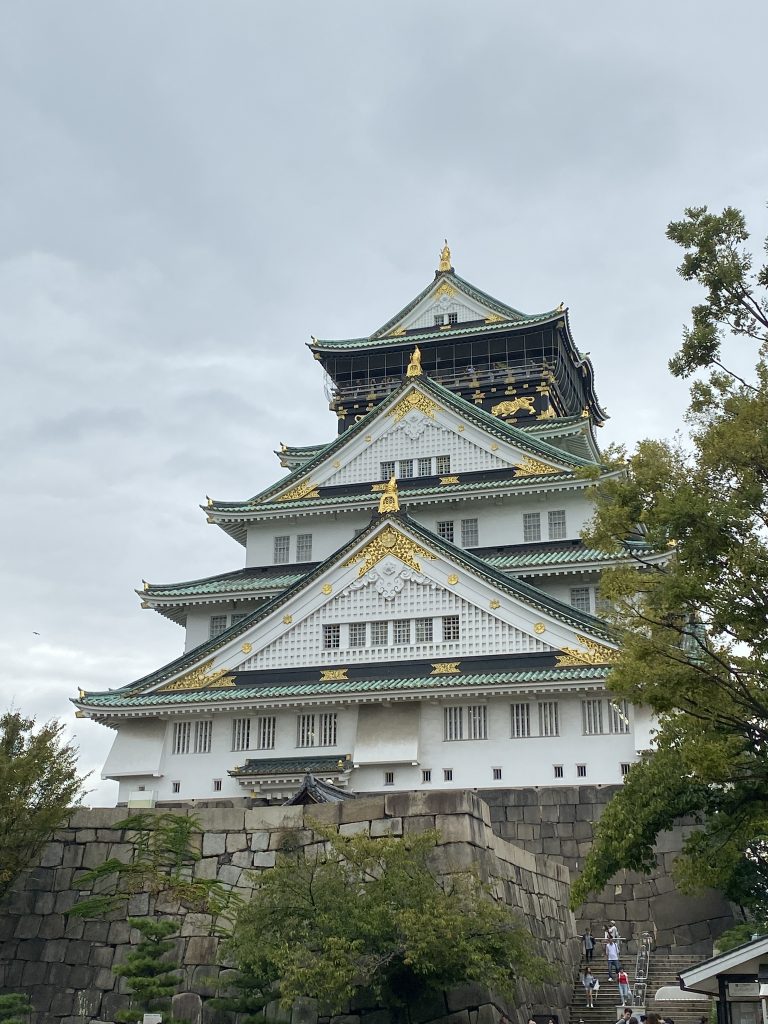
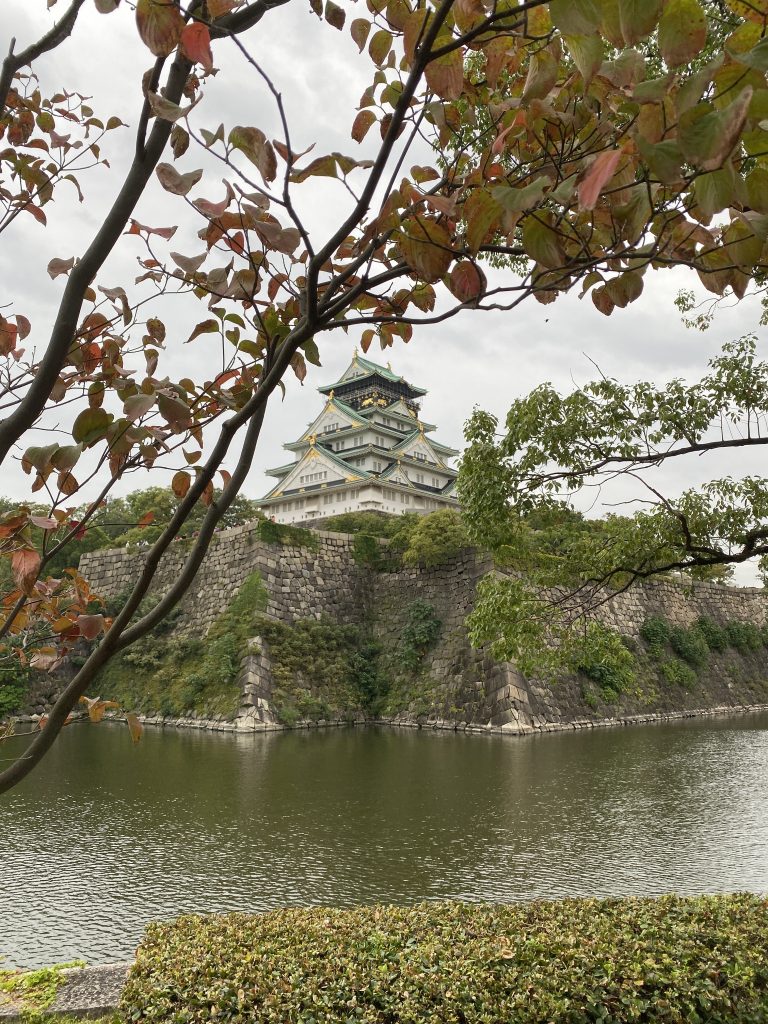
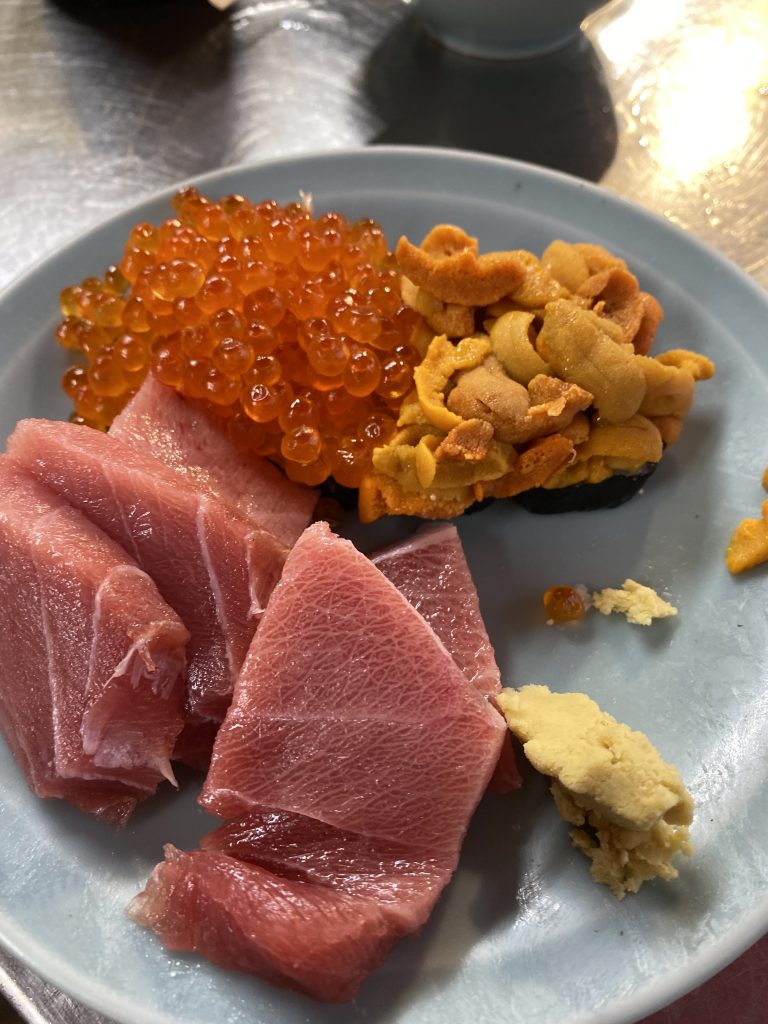
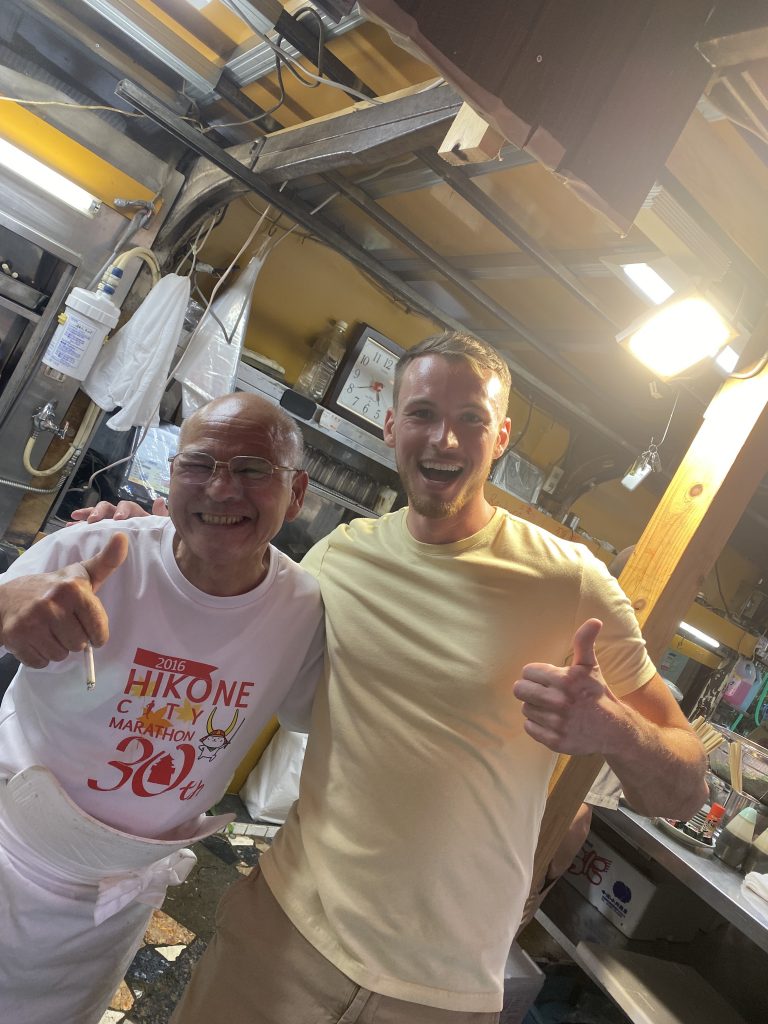
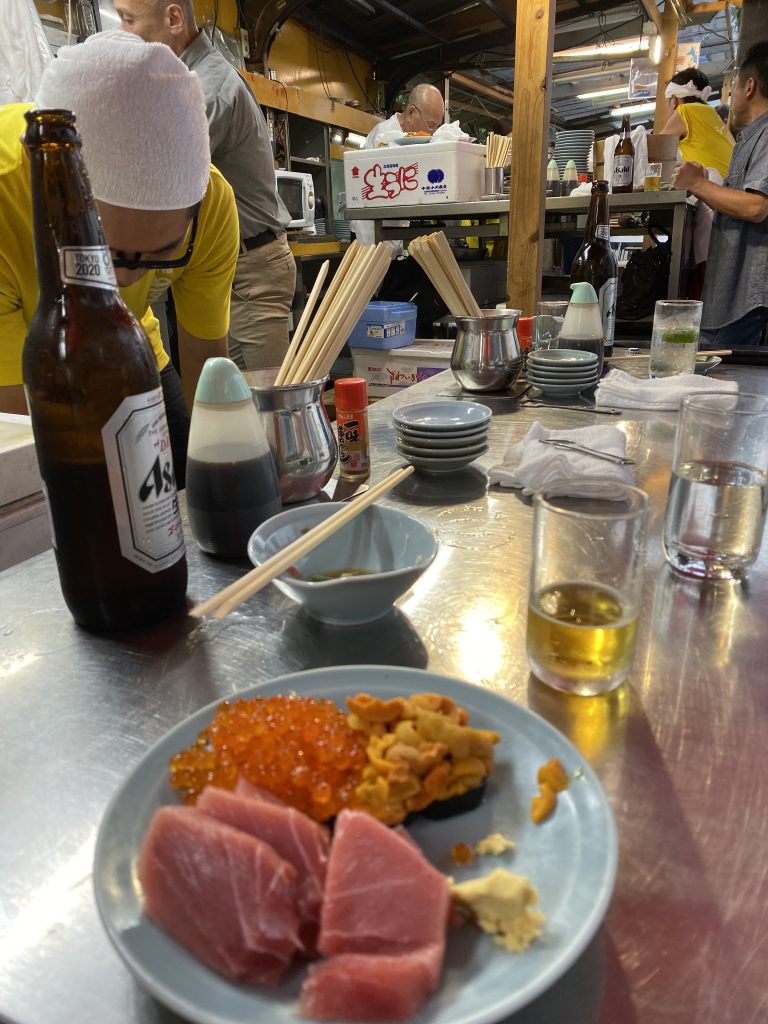
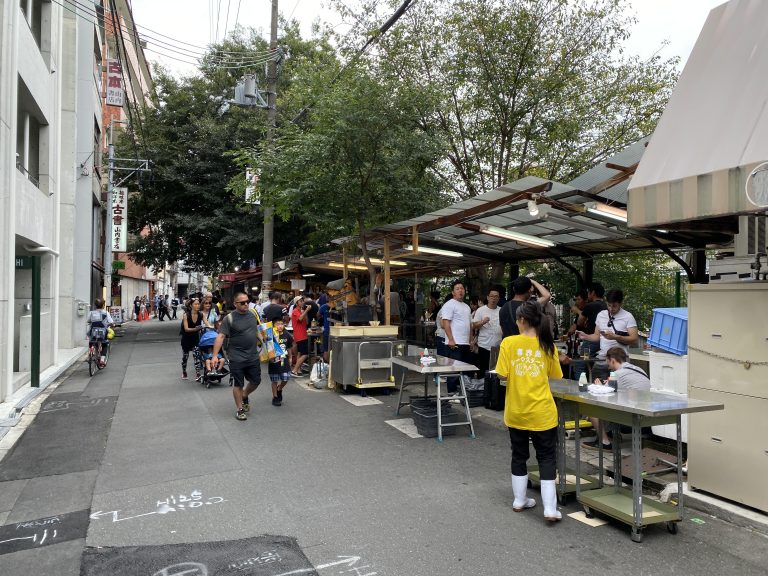
Featured on Netflix’s docu-series “Street Food” Toyo is a world famous sushi chef with one of his most desired dishes being the blow-torched tuna. Toyo is a character himself, yelling loudly and making jokes with all of the customers and staff members. He and his very simple but perfectly prepared dishes make Toyo’s Izakaya a must in Osaka. The environment is very unique for Japan, being outdoors and resembling something similar to a southeast Asian footstall. The wait when I arrived around 4:00pm was about 30-minutes, and was absolutely worth it. Many restaurants and bars don’t scale after being featured on travel shows, but Toyo’s has stayed perfectly. I was actually able to get a picture with Toyo and got to have a quick chat with him. He speaks conversational English as well.
Hours: Tues, Wed, Fri, Sat 3:30pm-9:00pm
Location: 3 Chome-2-26 Higashinodamachi, Miyakojima Ward, Osaka, 534-0024, Japan
Take a roundtrip back to Osaka Castle to enjoy a beautiful sunset over the castle.
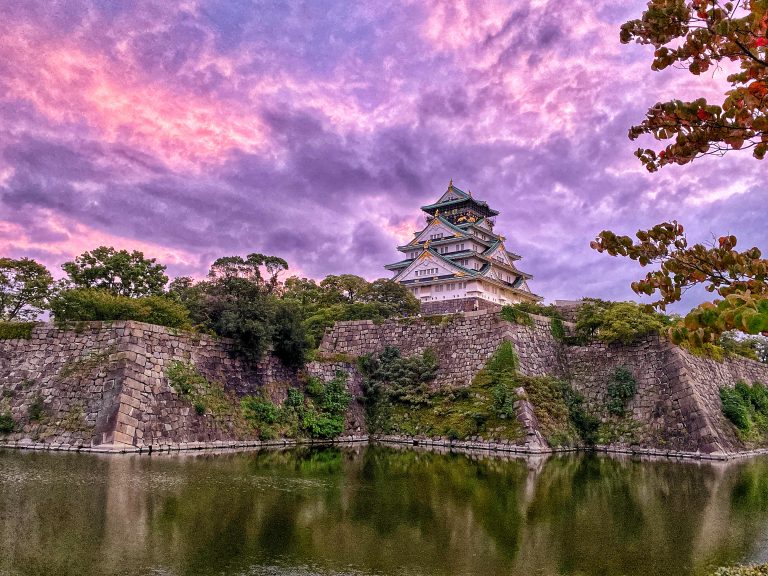
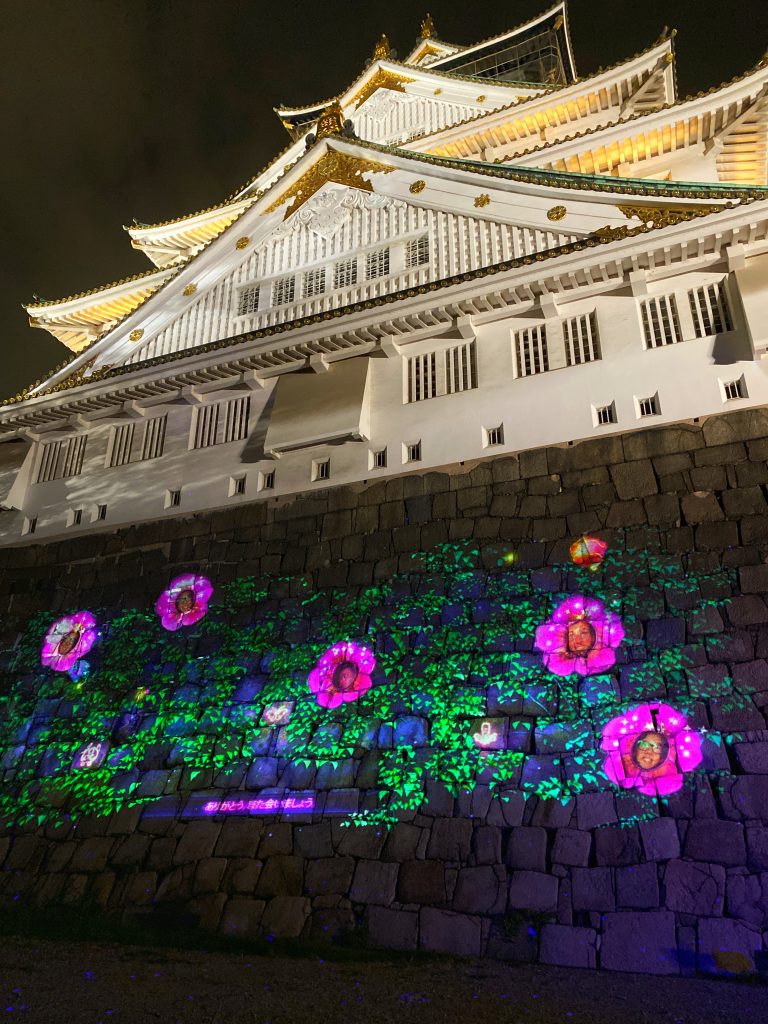
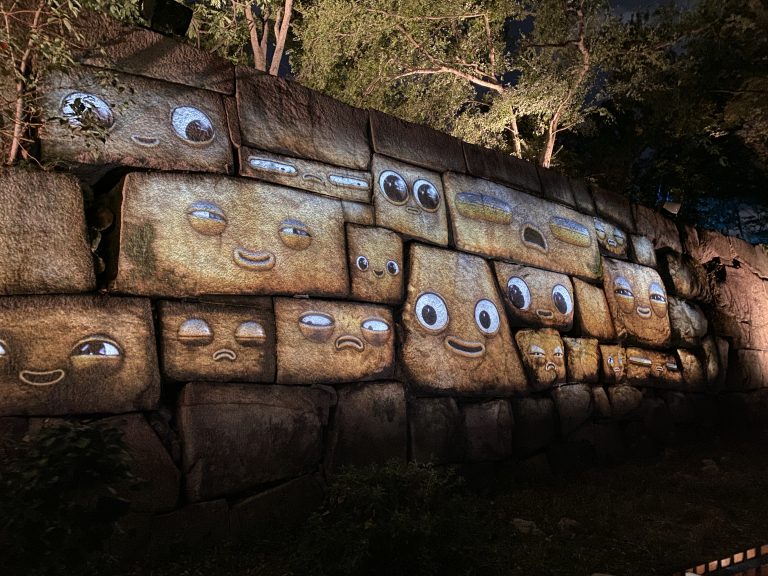
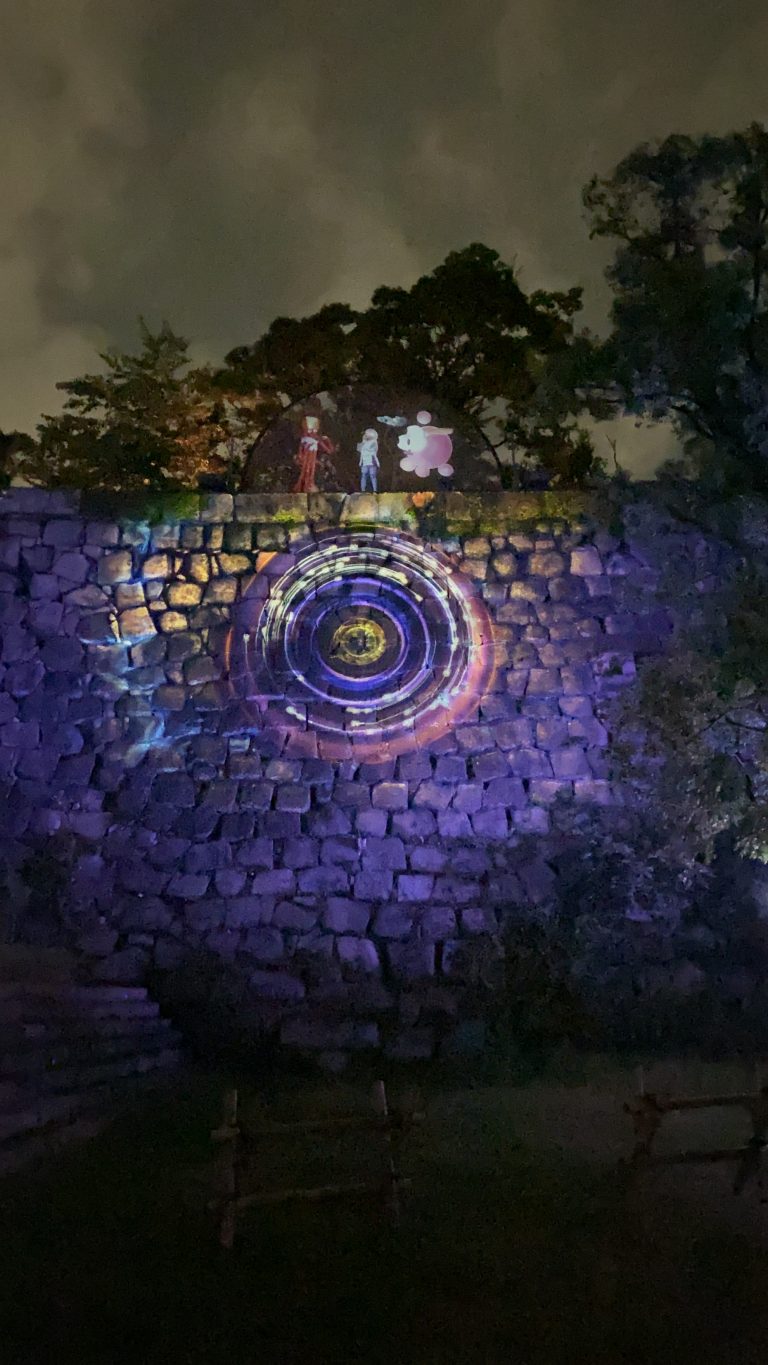
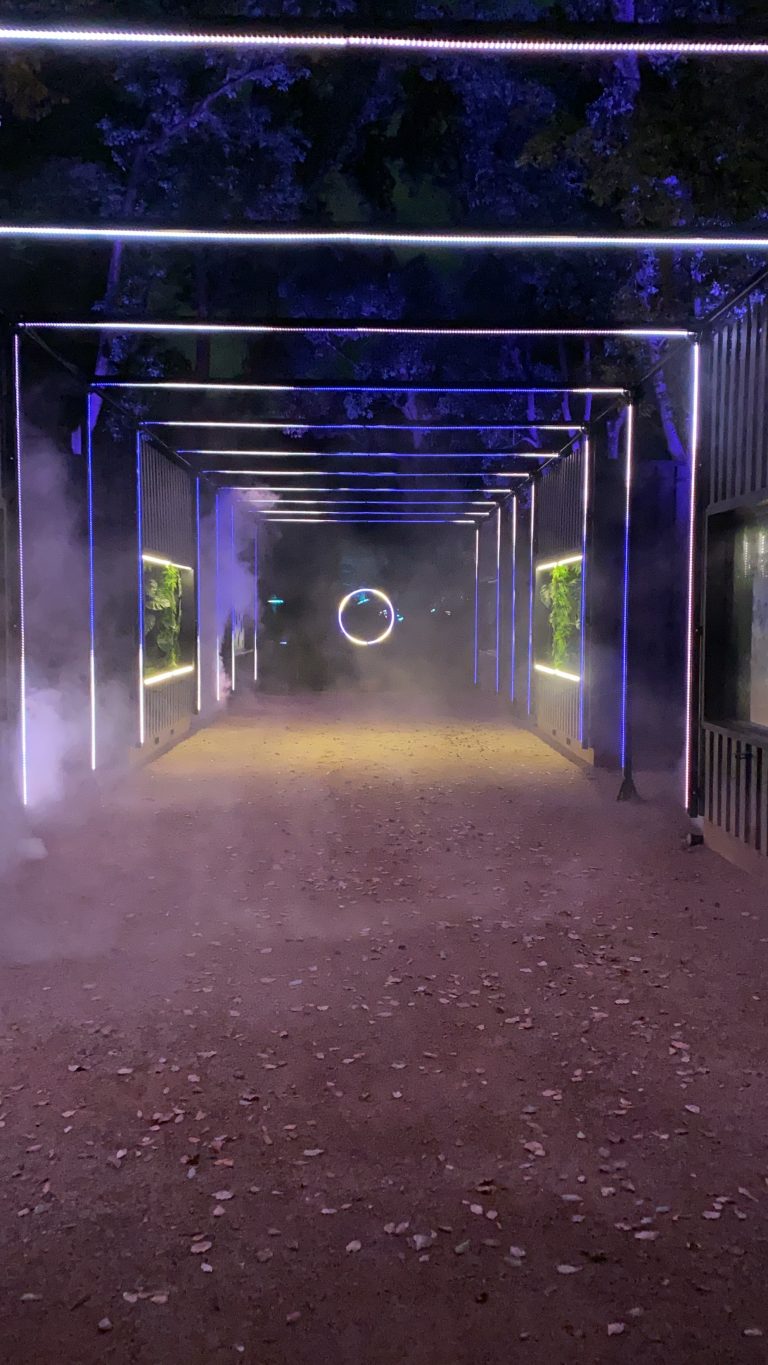
Once the sun sets, the Sakuya Lumina experience will begin outside of Osaka Castle. Sakuya is an enchanted night walk illuminated with visuals, music and a story about a young girl from the future who finds herself lost in our time. It’s a really unique experience as they take the surrounding castle gardens and even parts of the castle and add visual effects, including the castle wall rocks moving and speaking. The experience is a bit more “kawaii” (cute) compared to other Lumina experiences like the Vallea Lumina experience in Whistler which almost made me cry it was so beautiful. The experience is in Japanese with English subtitles and English signs posted throughout.
You can buy tickets at ticket booths surrounding Osaka Castle but they don’t open until the evening. If you’d like to pre-purchase your tickets you can buy them on the Klook app. I tried to purchase my tickets at Lawson but they require a Japanese phone number to complete the purchase and the ticket system is all in Japanese.
From Osaka Castle walk to Temmabashi Station, take the Keihan Main Line Limited Express Demachiyanagi to Gion-Shijo Station. From Gion-Shijo Station walk to Inn Kawashima. Inn Kawashima is a traditional Japanese Ryokan (inn). Ryokans just like hotels can range in price, amenities, and level of luxury. Inn Kawashima is very nice and comfortable, offering a traditional Japanese experience without too many other amenities, which is fine, as you won’t be spending much time at the ryokan. To book Inn Kawashima or any other ryokan visit: http://JapaneseGuestHouses.com/ They also do provide breakfast and dinner, offering traditional Japanese dishes.
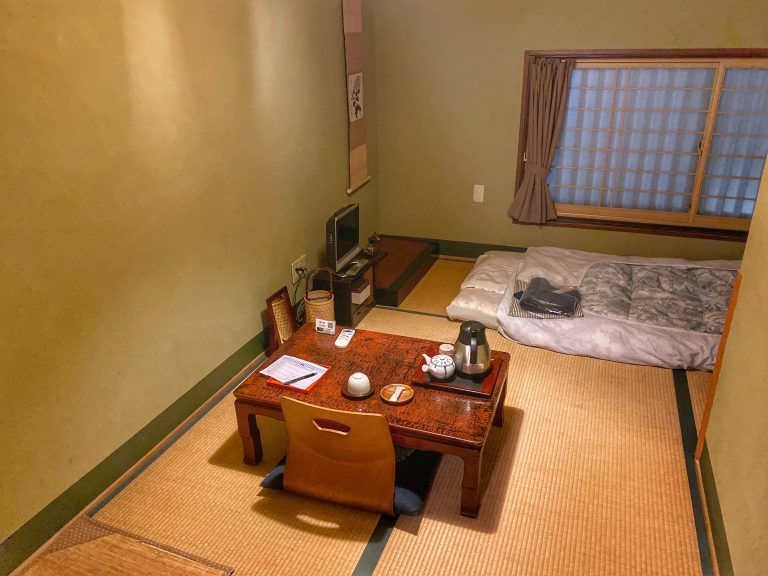
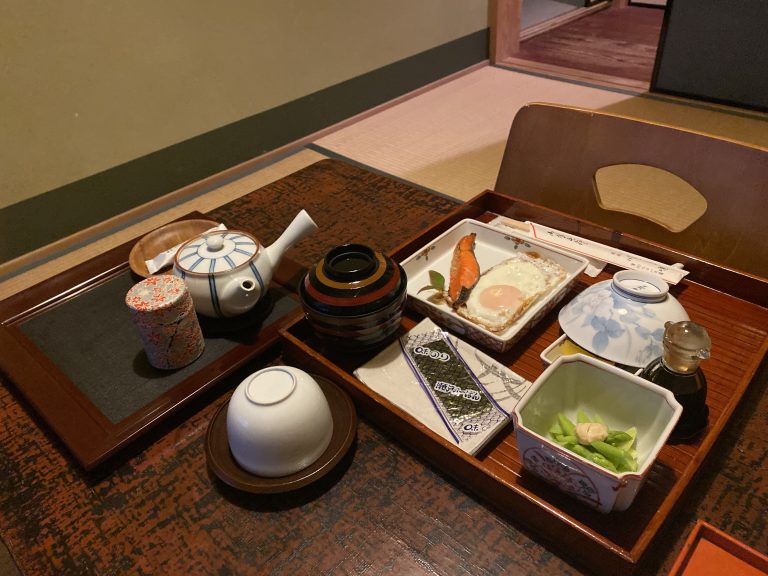
Day 3:
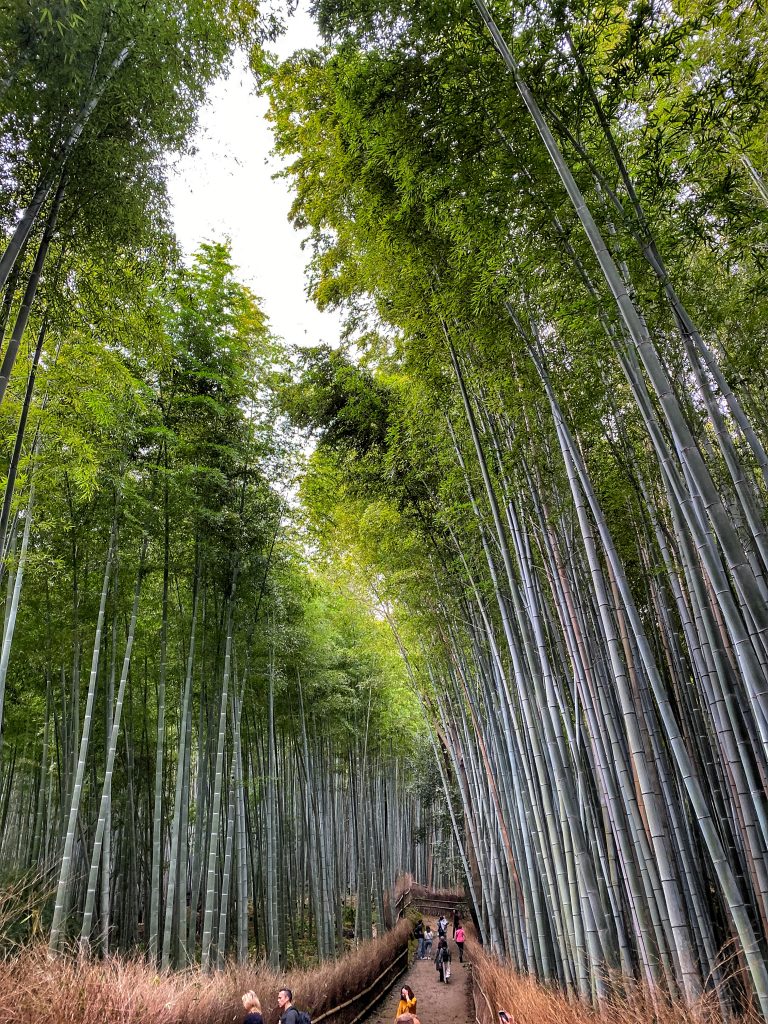
After eating breakfast visit the Arashiyama Bamboo forest. The walk to the bamboo forest is beautiful, you’ll cross rivers, pass by traditional Japanese temples and buildings, and more. The bamboo forests are beautiful and a great photo spot.
From Kyoto Kawaramachi Station take the Hankyu-Kyoto Line to Karsura Station then transfer to the Hankyu-Arashiyama Line to Arashiyama Station. It’s about a 20-30 minute walk to the bamboo forest.
The Monkey Park is one of my favorite places in Kyoto. When you first hear Monkey Park, you might be thinking zoo or cages, but the beauty of the Monkey Park is that all of the monkeys are wild and free. There is even an area where the humans are caged in to allow the monkeys to enjoy their area and everyone stay safe. You can buy snacks to feed the monkeys through the cage too. The monkeys are adorable and love to play. Sometimes they can get feisty, mostly with each other, so just keep in mind that they are wild and observe the rules that are posted.
The Monkey Park entrance is about a 15-minute walk from the Bamboo forest then a 15-minute uphill walk to the actual monkey area.
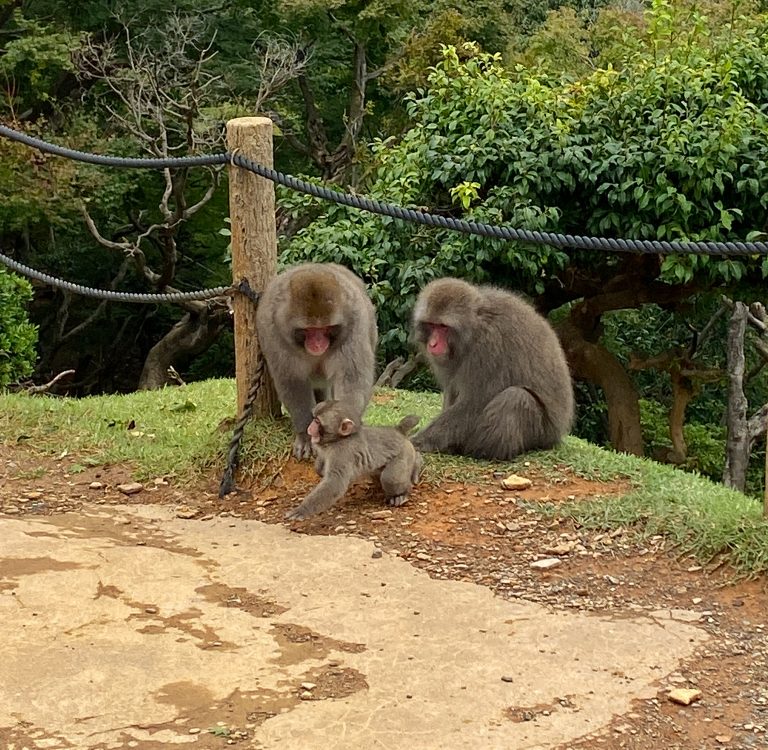
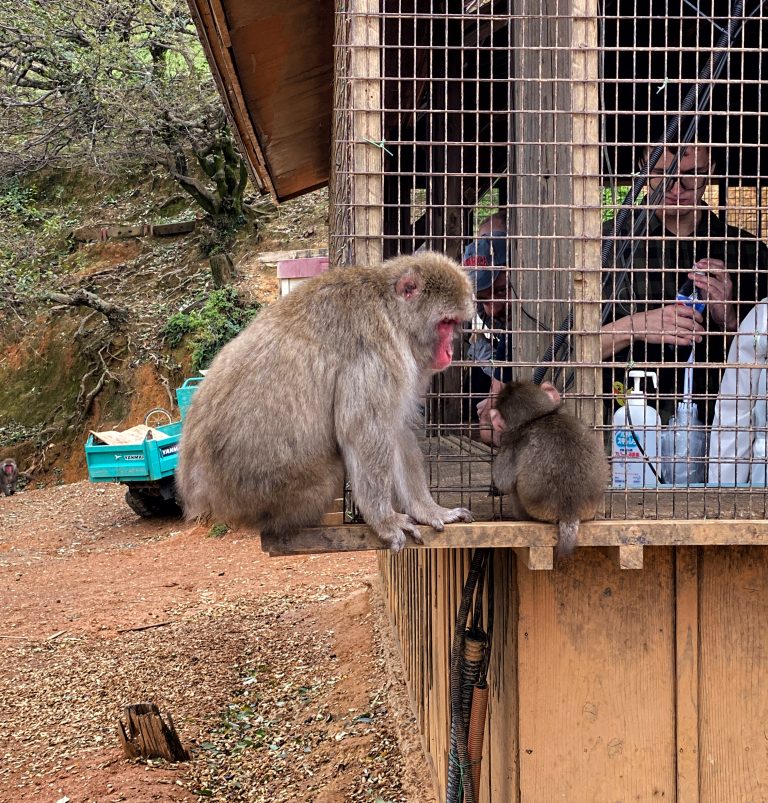
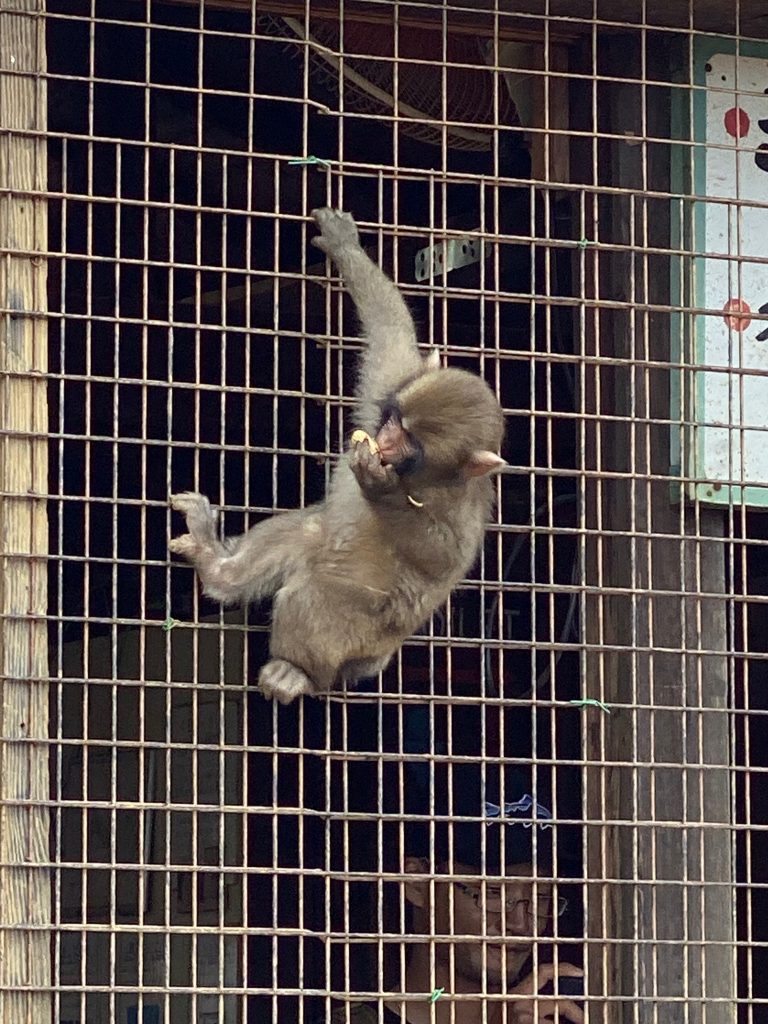
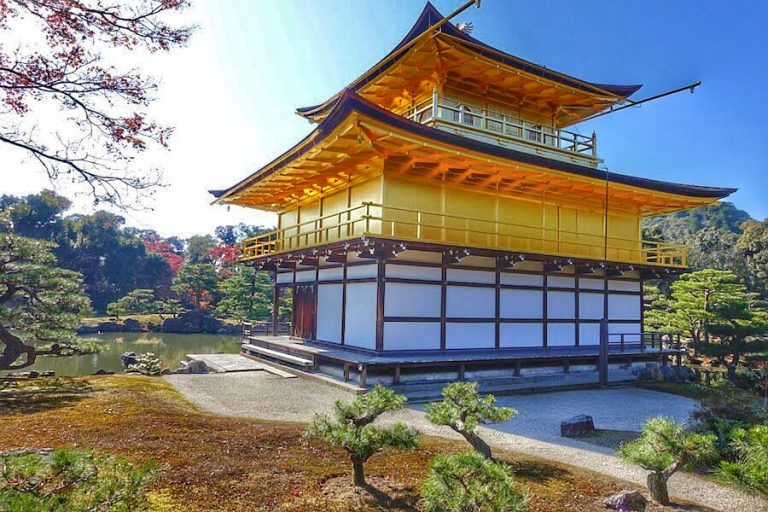
Kinkakuji is the famous golden temple of Japan that is featured on countless tourist marketing materials due to its sheer beauty. There are beautiful gardens surrounding Kinkakuji as well.
To reach Kinkakuji from Arashiyama Station you’ll need to take a bus. You can walk to Hankyu Arashiyama Station take the 63: Sanjo Keihan mae to Marutamachi Ommae Dori (21 stops) then take the 204: Kita Oji Bus Terminal bus 7 stops to Kinkakujimichi and it’s a 2-minute walk.
Nijo Castle’s construction was completed in 1626 by the famous Tokugawa Shogunate. It’s a stunning structure and a unique castle compared to many of the castles you’ve seen in Kansai. Similar to Kinkakuji, Nijo Castle grounds feature beautiful gardens. Make sure to wear socks under your shoes, as you’ll be required to take your shoes off to walk through Nijo Castle.
From Kinkakuji walk to Kinkakujimichi and take the 101: Kyoto Eki Mae bus (8 stops) to Nijojo mae.
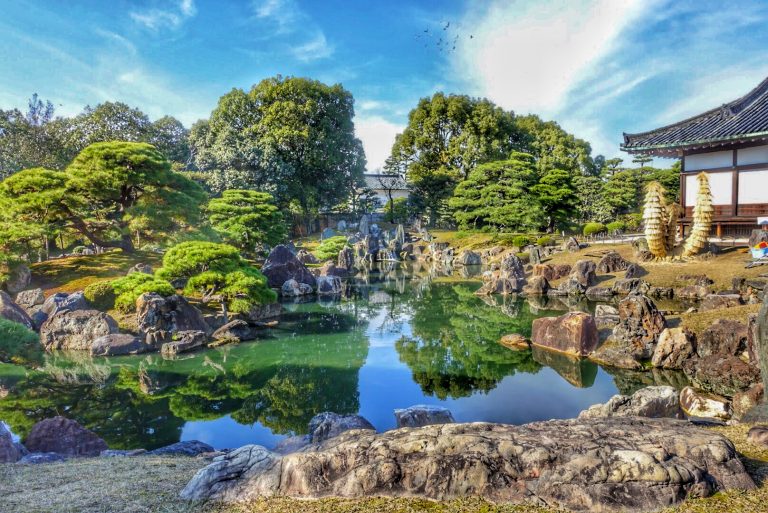
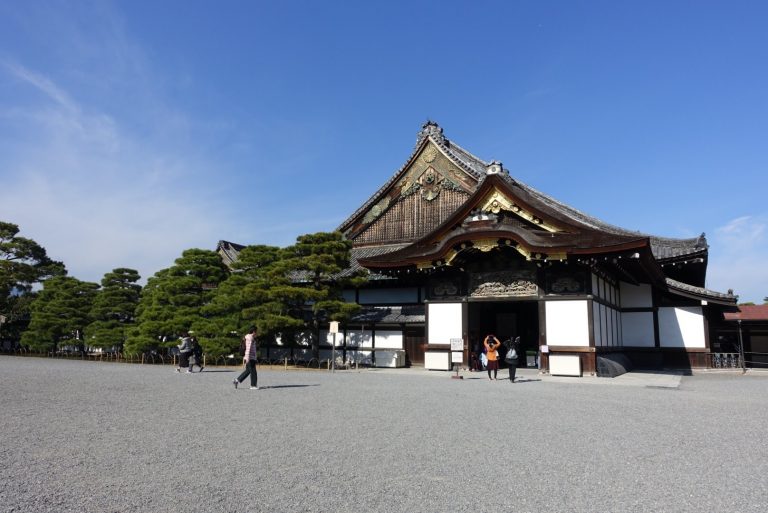
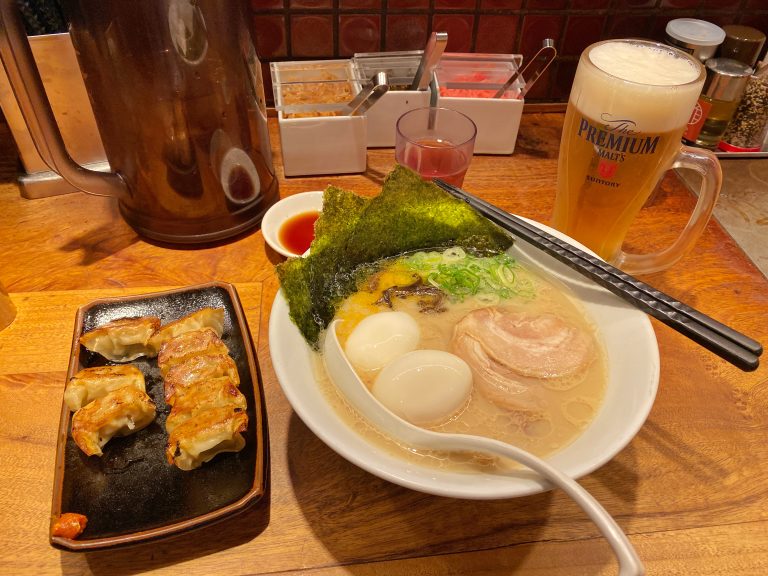
Ippudo Nishiki-Koji is a fantastic ramen shop that is one of the most popular in Kyoto. Their ramen is outstanding and they have fantastic gyoza. There is typically a wait out the door but it goes rather quickly. They have English menus.
Ippudo Nishiki-Koji is a 22 minute walk from Nijo Castle or from Nijojo Mae you can take the 12 bus towards Ritsumeikan Daigaku mae ride for 7 stops and get off at Shijo Takakura (the total time is 18 minutes).
If you’re still hungry the Nishiki Market is a great way to see some of Japanese street food, they also have plenty of green tea soft serve or mochi if you have a sweet tooth.
The Nishiki Market is a 4-minute straight shot walk from Ippudo Nishiki-Koji.
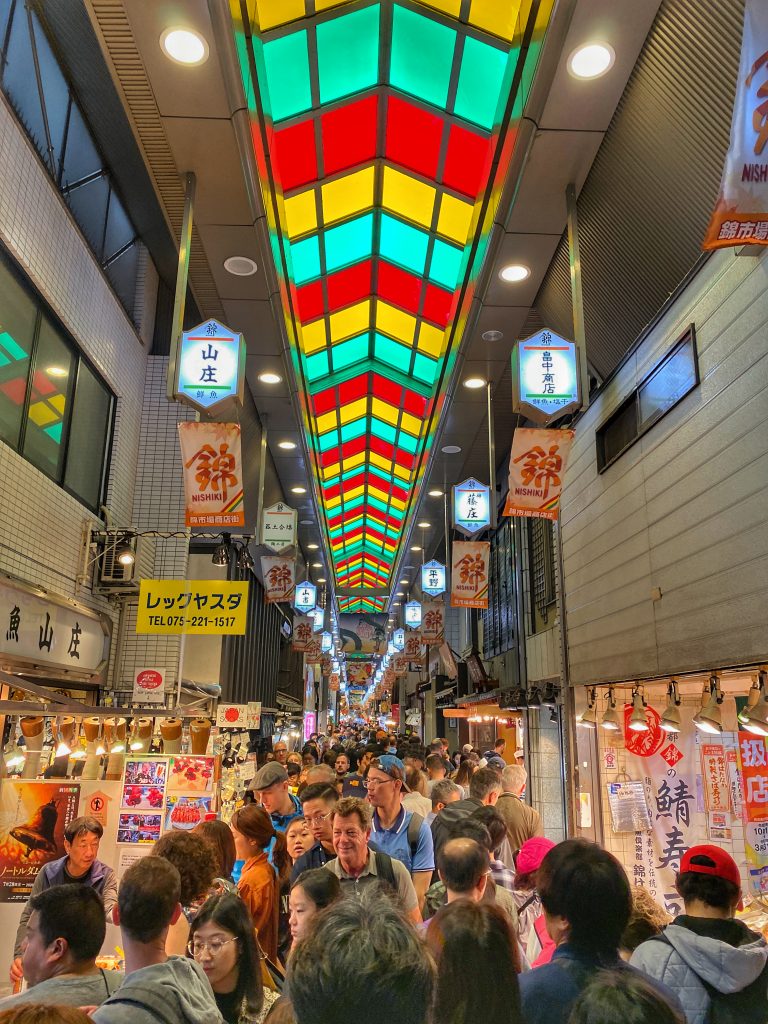
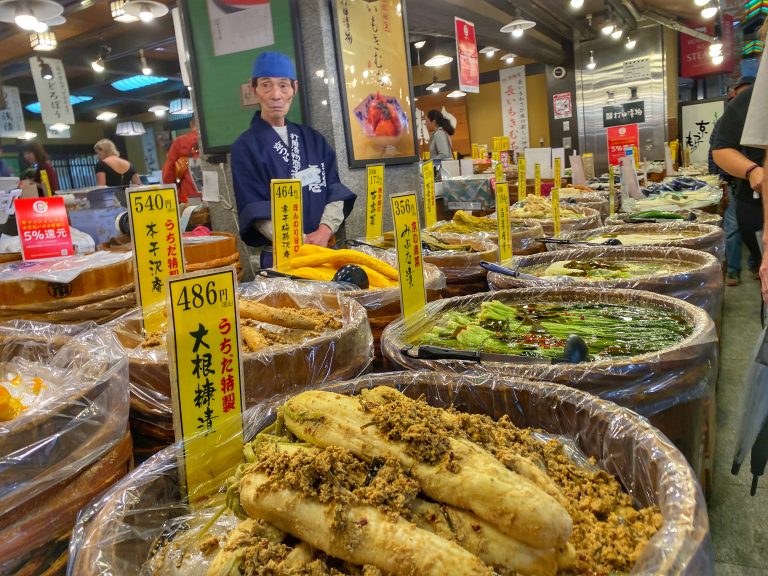
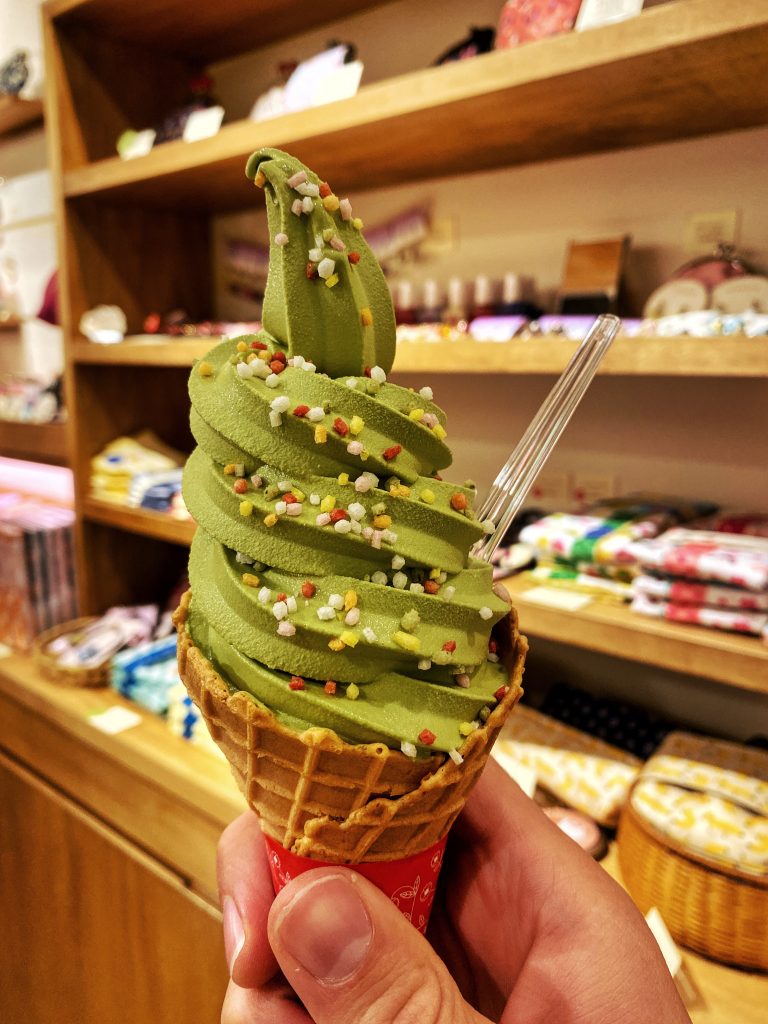
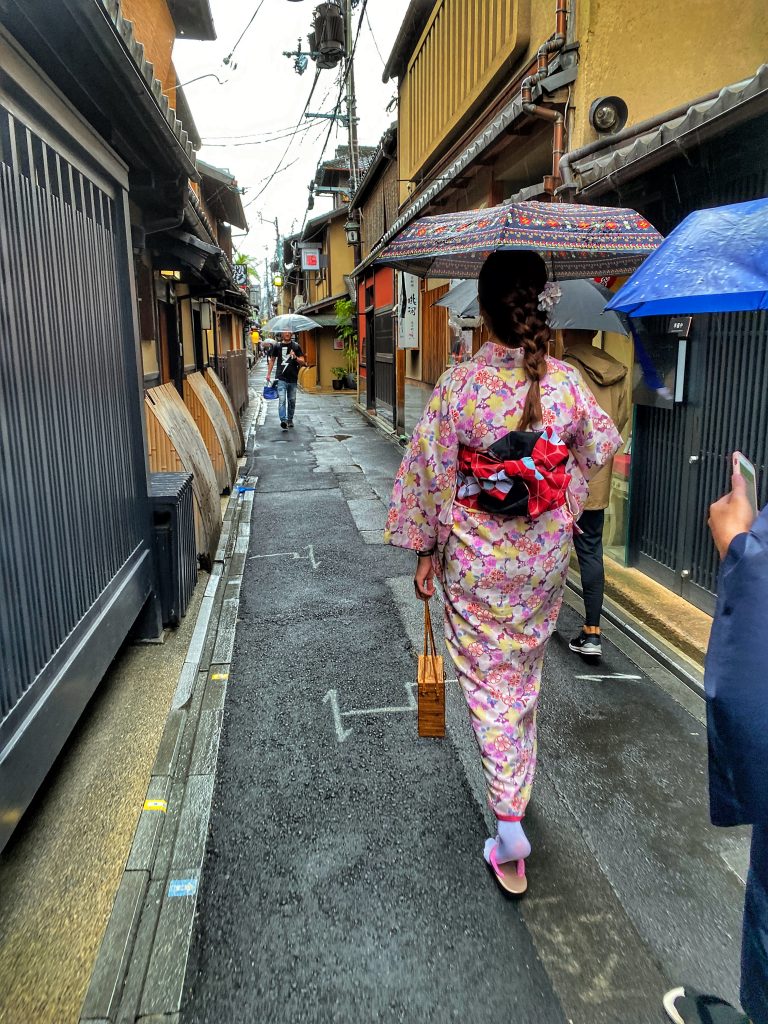
Gion is the traditional Japanese alleyways and photos of people dressed as Geisha that you see on travel brochures. It’s a very beautiful and iconic area for photos and to be transported back in time. Be sure to ask for permission before taking picture of anyone dressed as a geisha.
Gion is a 12-minute walk from Nishiki Market.
Kiyomizu-dera is one of the most celebrated and visited temples in Japan. The entrance area features a gorgeous pagoda and entryway, and then a large wooden terrace looking out at Kyoto.
If you’re running short on time, I might skip this and go straight to Fushimi Inari Taisha as it’s a bit out of the way.
To reach Kiyomizu-dera from Gion, walk to the bus stop Shijo Keihan mae take the 207 bus towards Kujo Shako mae and exit at Kiyomizumichi.
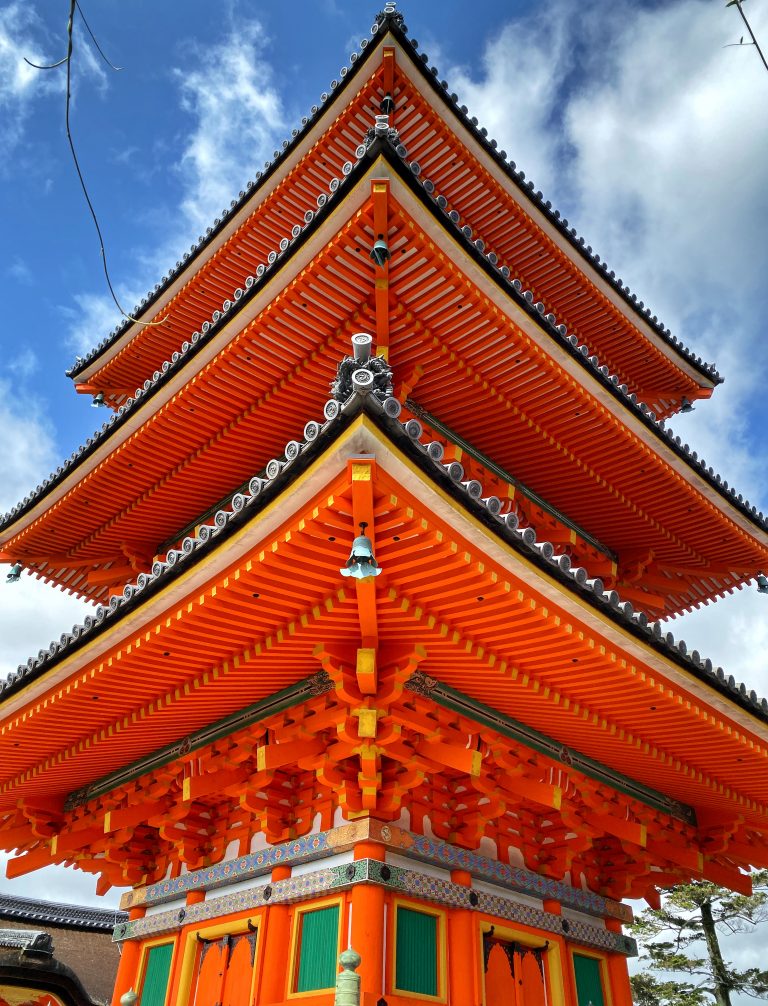
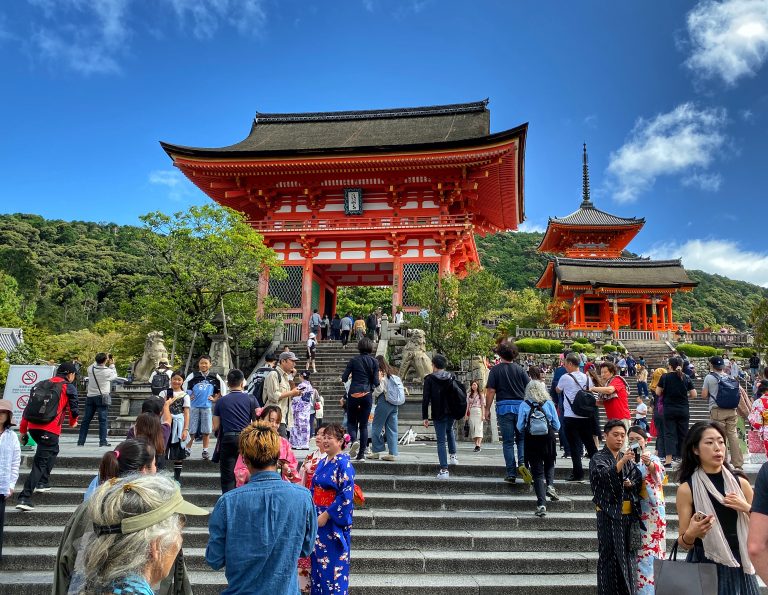
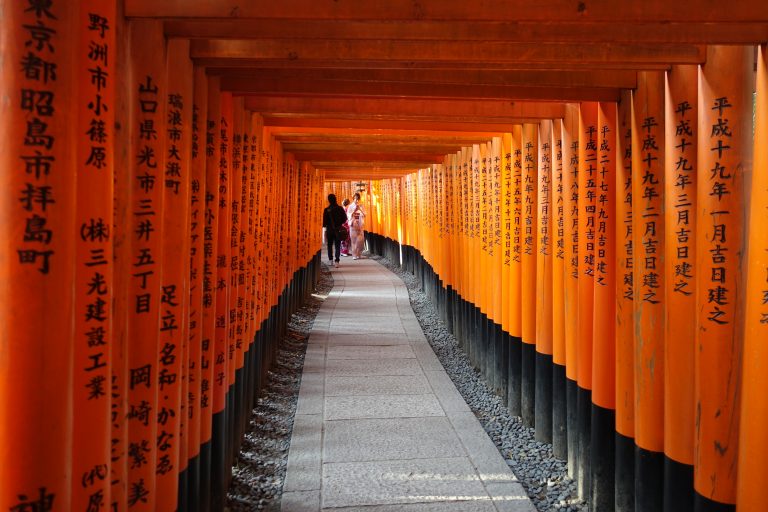
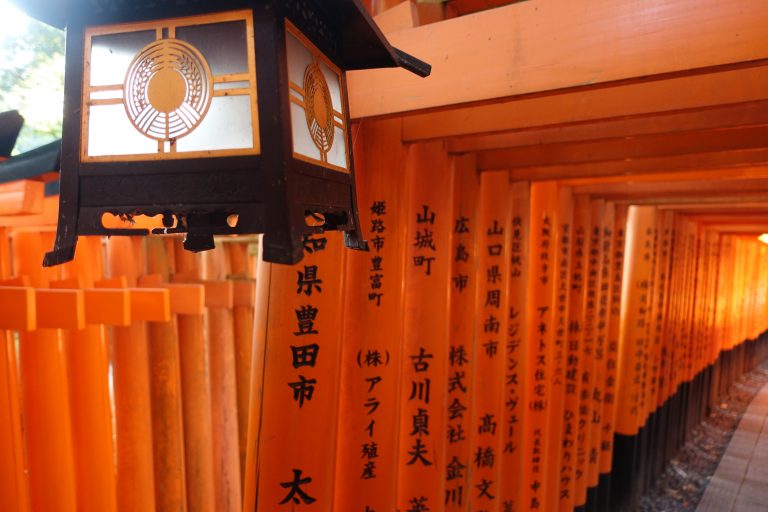
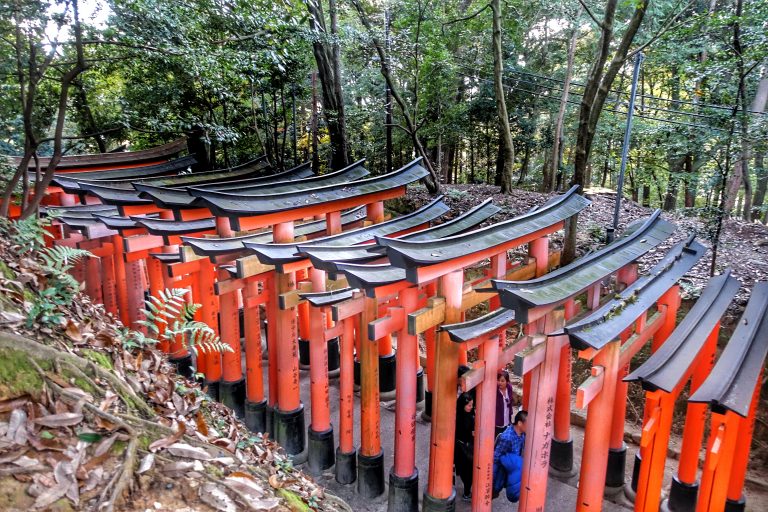
Fushimi Inari is my absolute favorite place in Kyoto. Fushimi Inari is where you see the pictures of the multiple red tori gates in a row. I love to visit Fushimi Inari a bit before sunset to enjoy the walk in the light, and then make my way back down as the dusk settles. It’s a very spiritual and I think exploring at early dusk adds an extra beautiful element. The tori gates towards the beginning of the journey are the most well maintained and the deeper you hike in the more rustic they are. Of course this means that the first few tori gates will be extremely crowded and harder to capture the perfect shot.
To reach Fushimi Inari Taisha Shrine from Kiyomizu-dera, you’ll walk 23 minutes to Kiyomizu-Gojo Station then take the Keihan Main Line to Fushimi Inari Station.
Dinner at Ryokan or Hanarai Udon
If you can enjoy a prearranged dinner at your ryokan, the meal will feature multiple Japanese dishes that will expand your palette. If you don’t have dinner arranged I strongly recommend Hanarai for Udon!
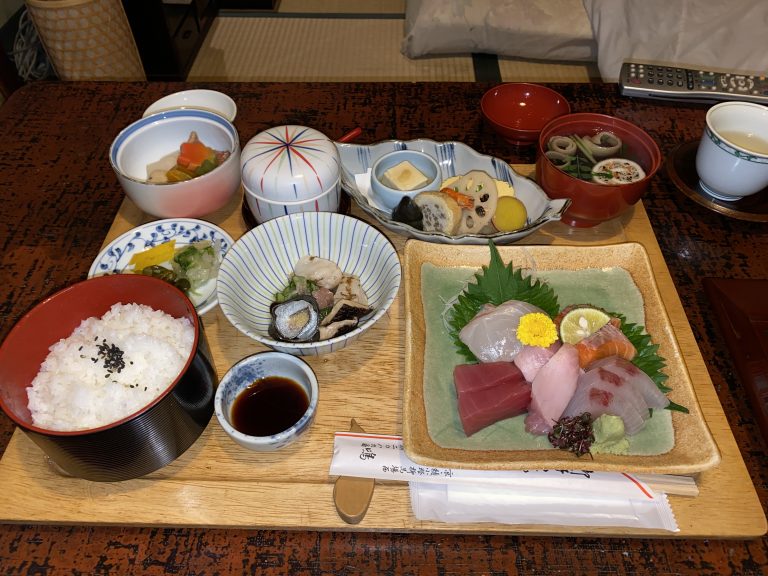
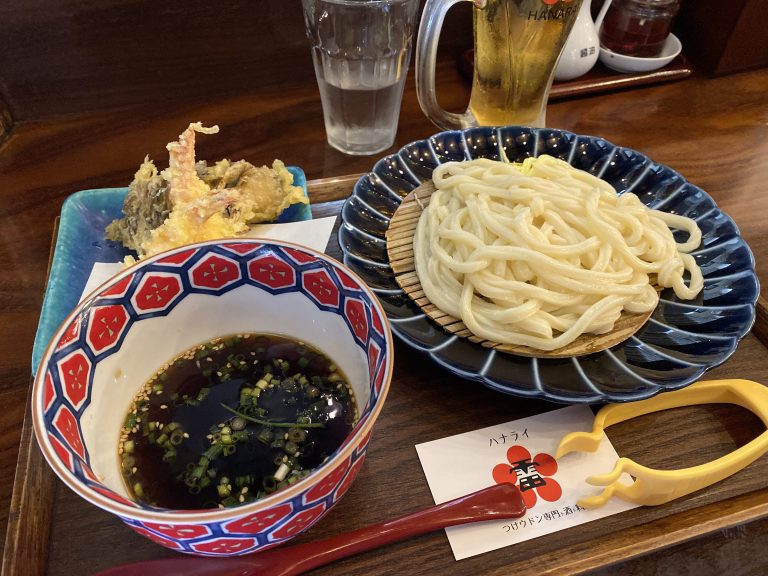
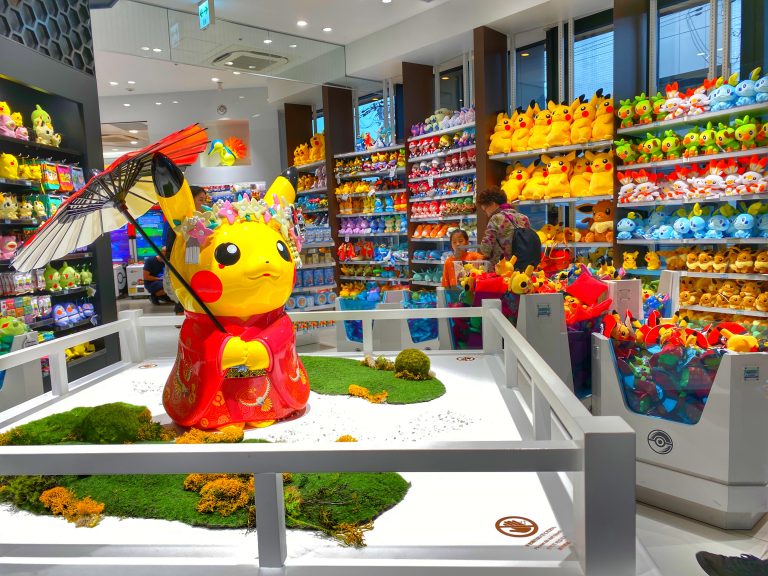
If you’re running ahead on time and haven’t seen the Pokemon Center in Tokyo, there is a location in Kyoto. It’s a great to buy souvenirs or be transported back to your childhood.
Tips and Tricks:
- The water and food in Japan is very clean so you don’t need to worry about getting sick.
- At most AirBnBs and traditional Japanese inns you should take off your shoes before entering. (Really recommend wearing socks to most places.)
- If you are a foreigner with a foreign passport and a ticket in/out of Japan you can get really great deals on a lot of the Japanese airlines with domestic flights. I would recommend riding the bullet train once or twice, just for the experience but the flights will be way more affordable. (You can also do night buses to get around that are even cheaper.)
- People are very quiet and respectful on trains, try to whisper.
- In Osaka people stand on the right side of escalators to let people pass, while in Tokyo people stand on the left.
- Japan is still a very cash-based economy, for larger purchases credit cards are accepted but for the most part, cash is preferred.
- Following tip 3: 7/11 and CitiBank ATMs are the best ATMs for foreign debit cards. I’ve found many of the other ATMs in Japan won’t accept American debit cards. There is a 7/11 ATM at KIX airport and multiple 7/11s throughout the region.
- You can get around mostly by train; taxi cabs are a little pricey.
- You can drink the water.
- The food safety standards are one of the best in the world.
- Some useful phrases are:
“Konichiwa” = Hello. “Arigatou”= Thank you. “~wa doko desuka?”=Where is ~?. “toire wa doko desuka?” = Where is the bathroom? “Sumimasen”= Excuse me. “gomen” = Sorry. “ikura?” = How much? “kudasai”= please. - Pay attention and try to imitate how people board trains and the subway, there is a particular art to it, which in turn makes the whole experience more efficient…and well downright beautiful.
- Download a translator app on your phone. Sometimes it’s hard to find people who speak English. Google translate works really well and includes an option where you can capture text with your camera.
- It’s hard to find public wifi in Japan, even though it’s becoming more common. You can rent a pocket wifi device at the airport or many AirBnBs offer them.
Additional Itineraries:
Discover more itineraries that you might be interested in.
Discover Your Next Adventure
Explore the best itineraries from travel experts around the world

This is amazing!!!! 100% hitting all of these when I go to Japan next year. You’re like a pocket local! Xoxox